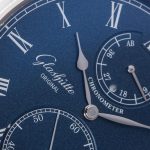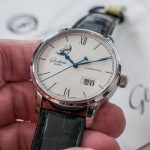A Visit To The Glashütte Original Manufacture – Photo Report Replica Wholesale Suppliers
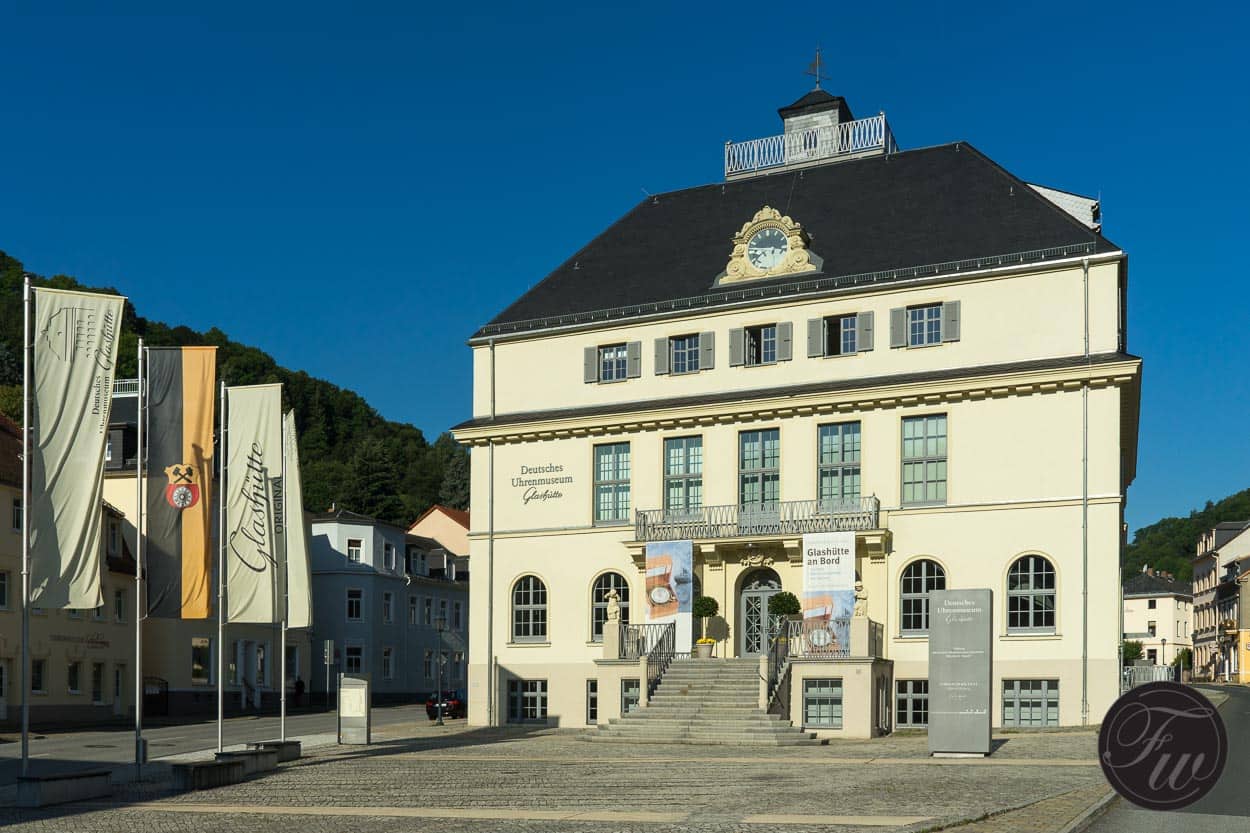
Glashütte Original Manufacture
Last week, Bert and I traveled from The Netherlands (our home country) to Glashütte in Germany. It is only a one hour flight, from Amsterdam to Dresden. In Dresden, a driver awaited us with a welcome sign and a shiny black BMW 530. We’ve seen worse. As it was end of the day, we went straight to this beautiful design hotel (QF) and had diner with René Marx (Head of Digital Media) and Michael Hammer (PR) of Glashütte Original. It became immediately clear that we were dealing with some true watch passionates here. Bert and I were looking forward to the next day.
German Watch Museum and Watchmaking School
Getting up at 6:00 isn’t exactly a hobby of ours, but the black bimmer would be waiting for us at 7:45 outside the hotel. Not only a trip to the Glashütte Original manufacture was on our schedule, but also a visit to the German Watchmaking Museum and the German watchmaking school. From Dresden to Glashütte will take you approximately 40 minutes. It is not a bad drive at all, as the scenery is beautiful with its green hills and picturesque villages. Little reminds us of the GDR time before 1990 in this scenery (Dresden does however).

Alfred Helwig School of Watchmaking
After we arrived in Glashütte, we were brought to the German watchmaking school (Alfred Helwig School of Watchmaking) just around the corner of the Glashütte Original manufacture. It is in the same building as the German Watch Museum, that we would visit later that day. We will do a separate report on the Alfred Helwig School of Watchmaking and the German Watch Museum. However, we can say it was very impressive to see both. The trained (and certified) watchmakers that finished this school, can start right away at the Glashütte Original manufacture.
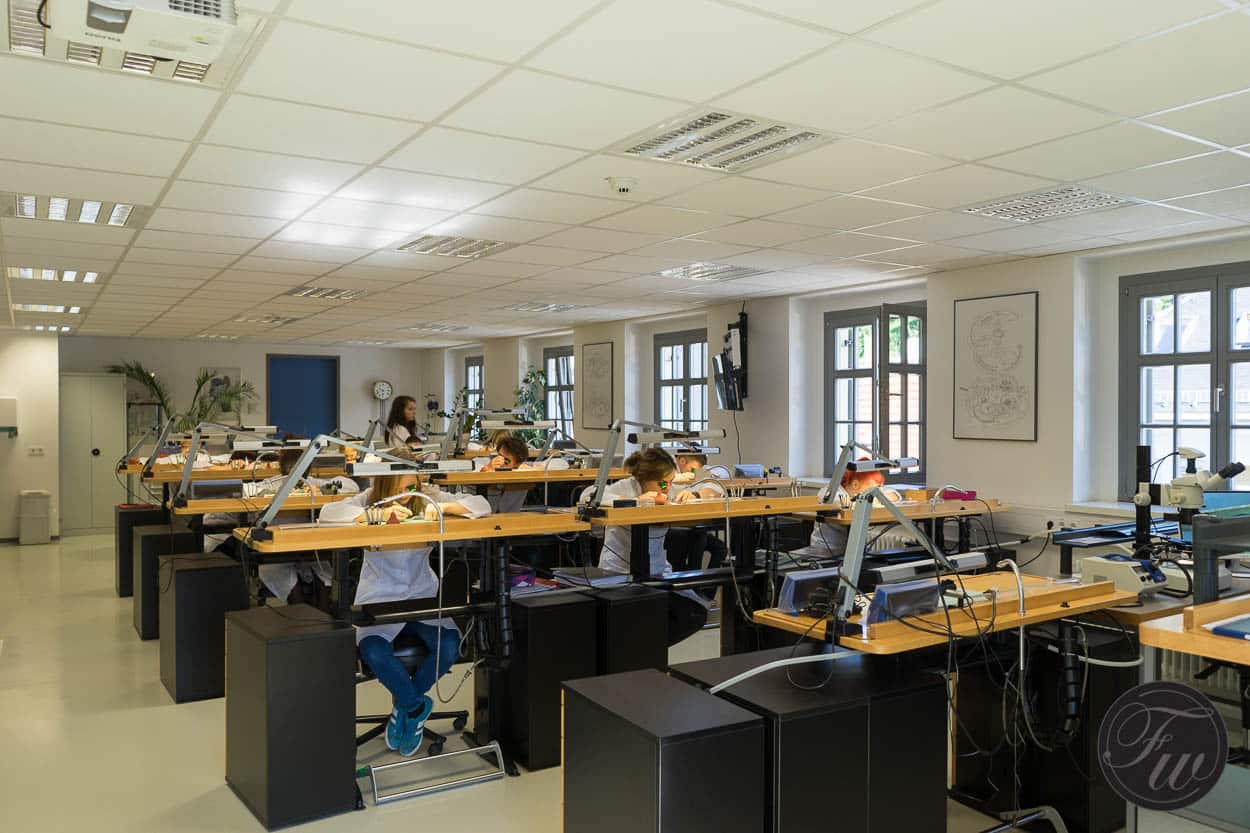
Inside the Glashütte Original Manufacture
This is the head quarters of Glashütte Original. There is no subsidiary in Switzerland, unlike most of the other Swatch Group brands. Not only the watchmaking staff works in Glashütte, also the management and all of its supporting departments are located in the same building. However, that’s not what we are here for. We want to see some German watchmaking.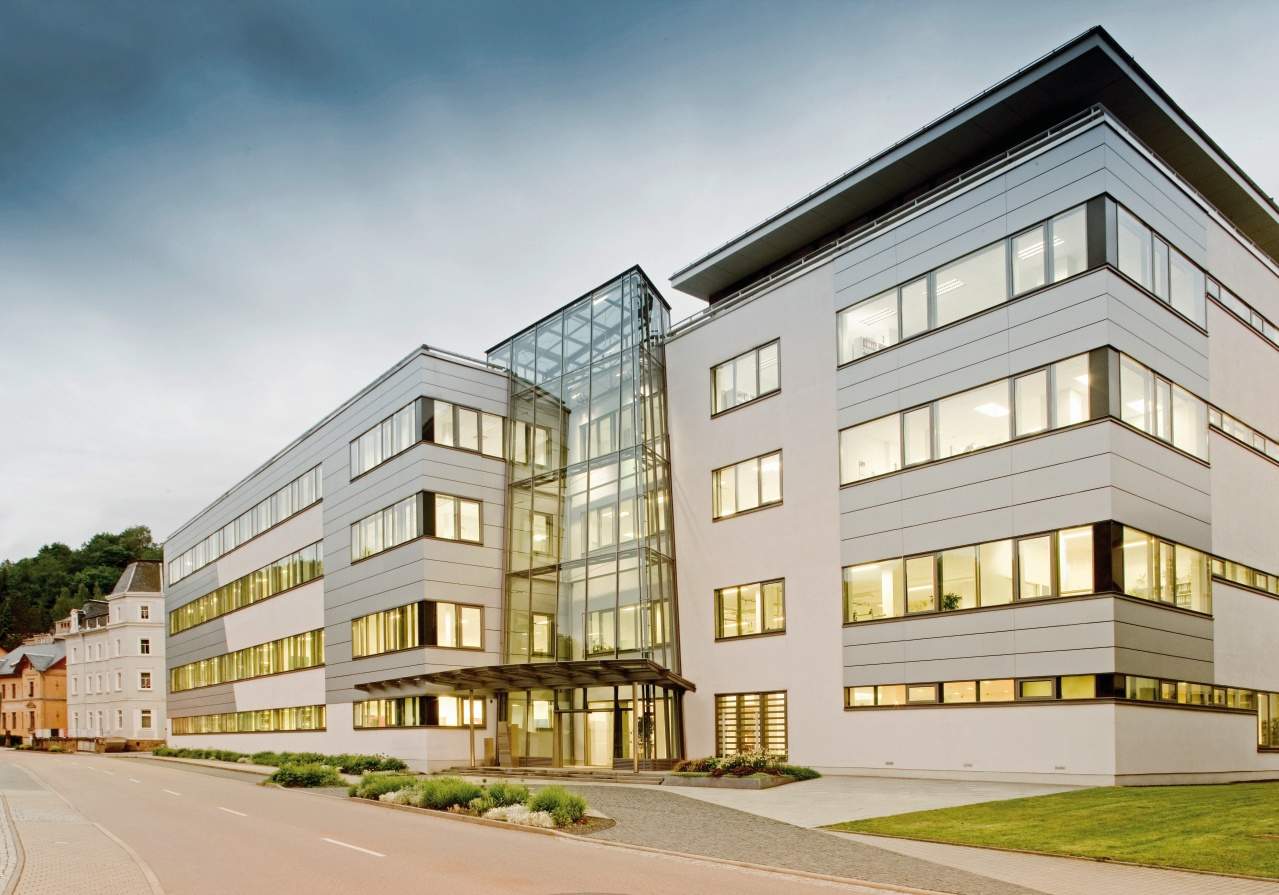
Light, Clean and Spacy
The Glashütte Original manufacture is a huge building. Over 10,000 square yards of space, to let the Glashütte watchmakers do what they do best. The building also lets in a lot of light. This is a must-have for watchmaking companies and most of the new manufacture buildings we visit have huge windows.
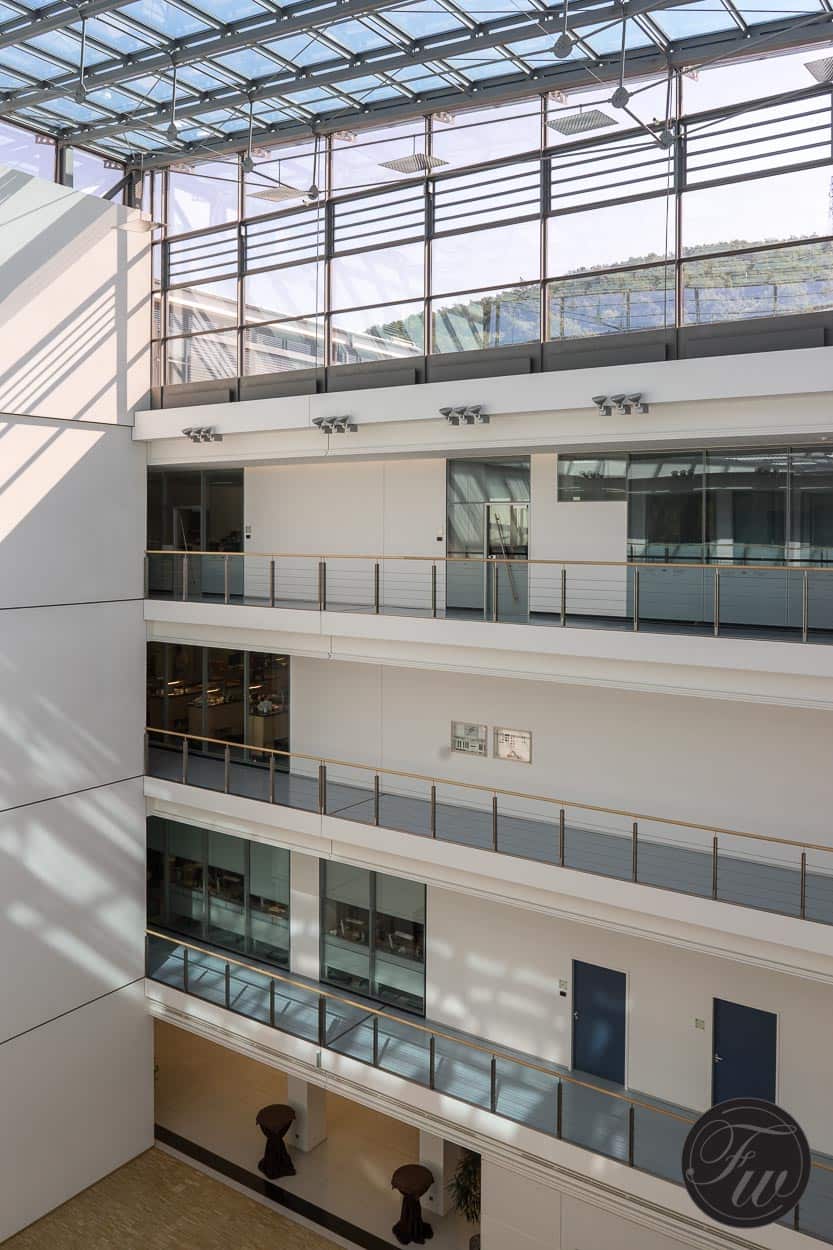
Big Machines
On the ground floor, Bert and I are taken into rooms with quite some heavy machinery. Glashütte Original is a manufacture, which means they produce a very large part of the movements in-house.
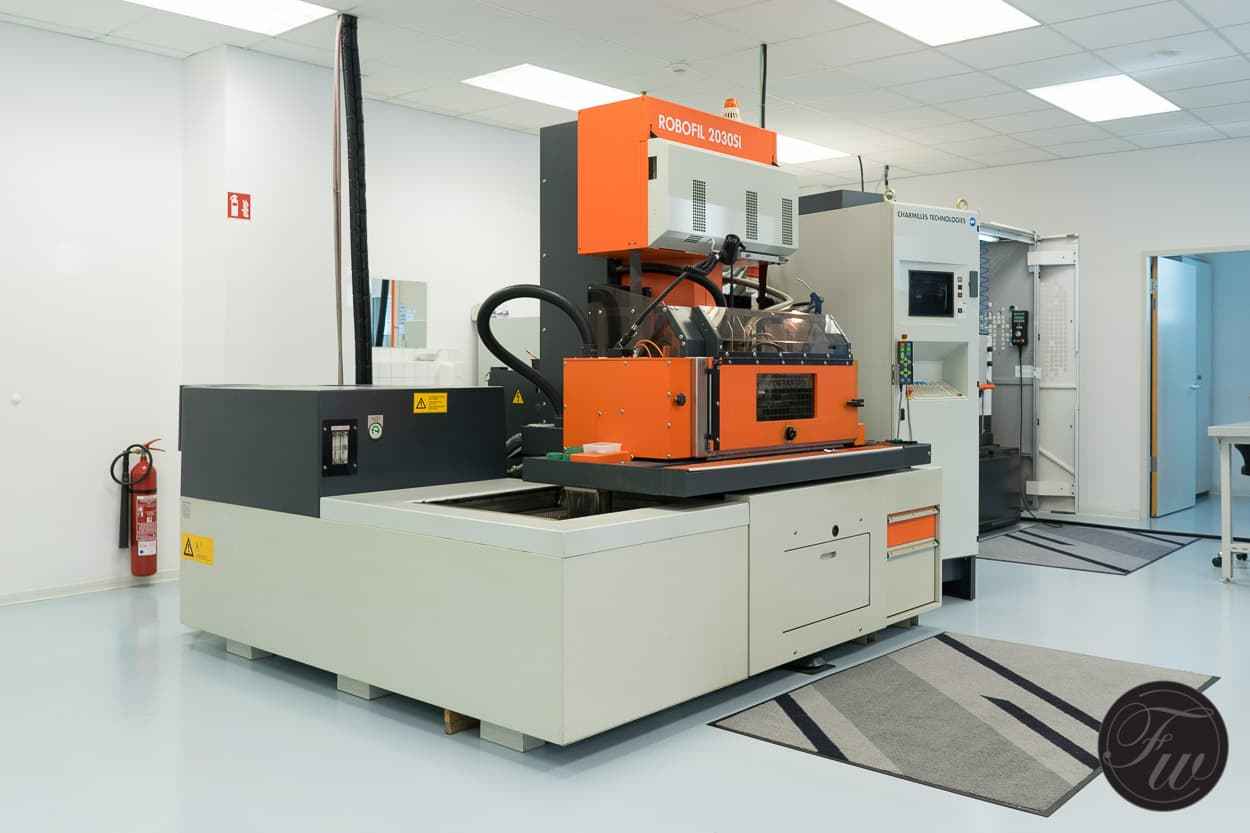
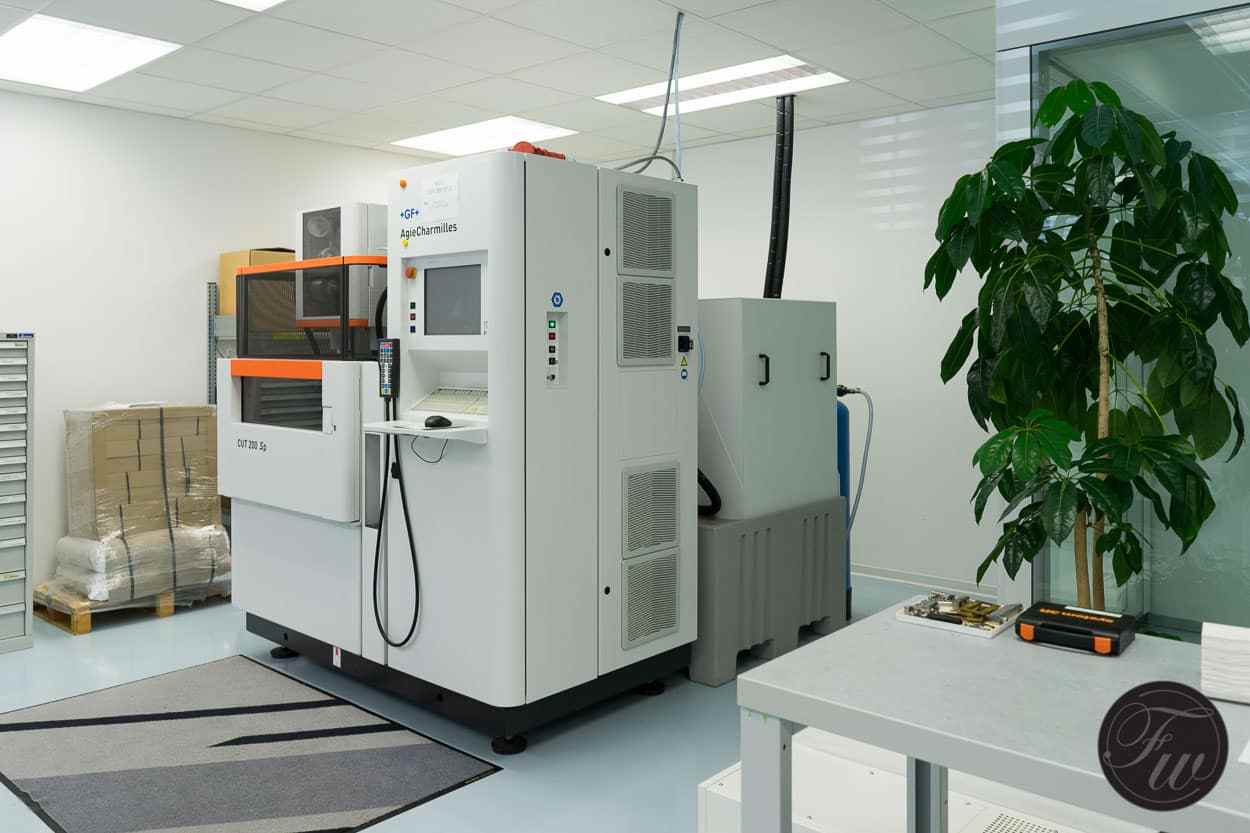
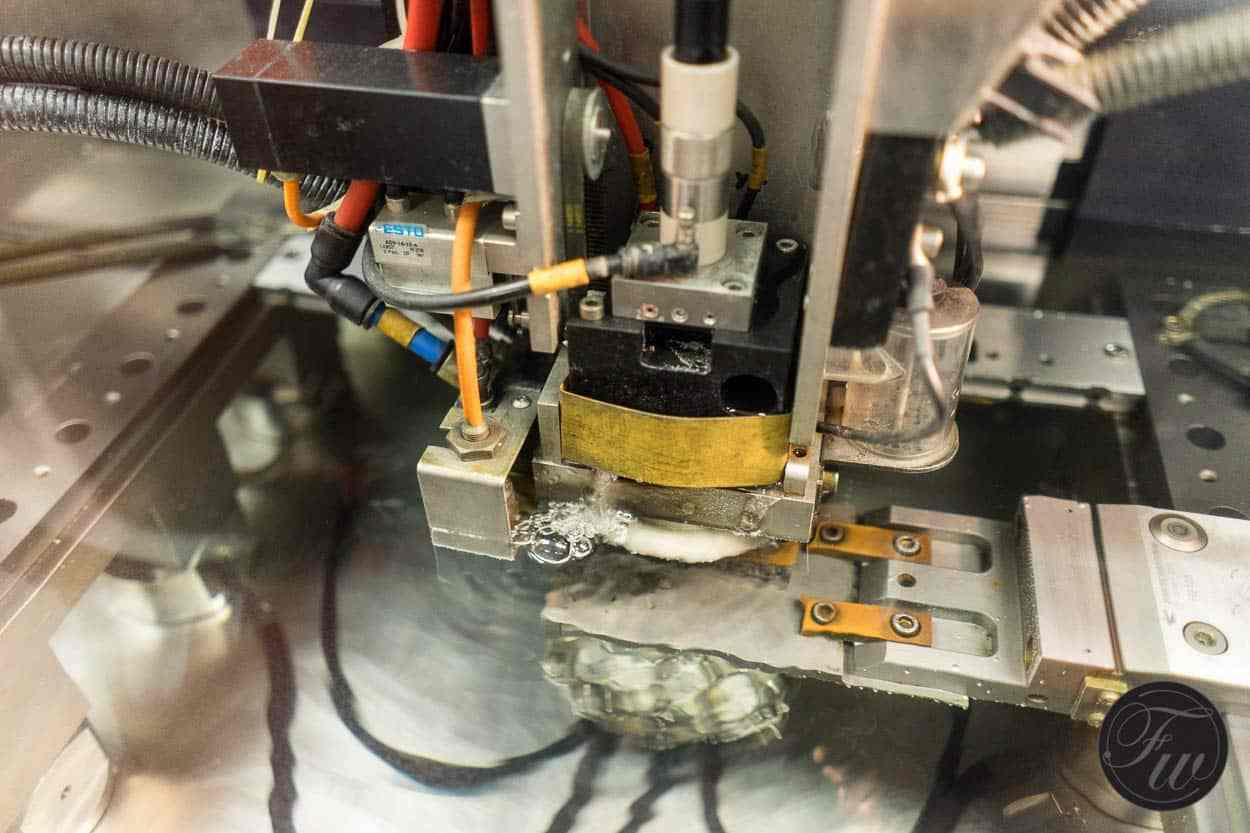
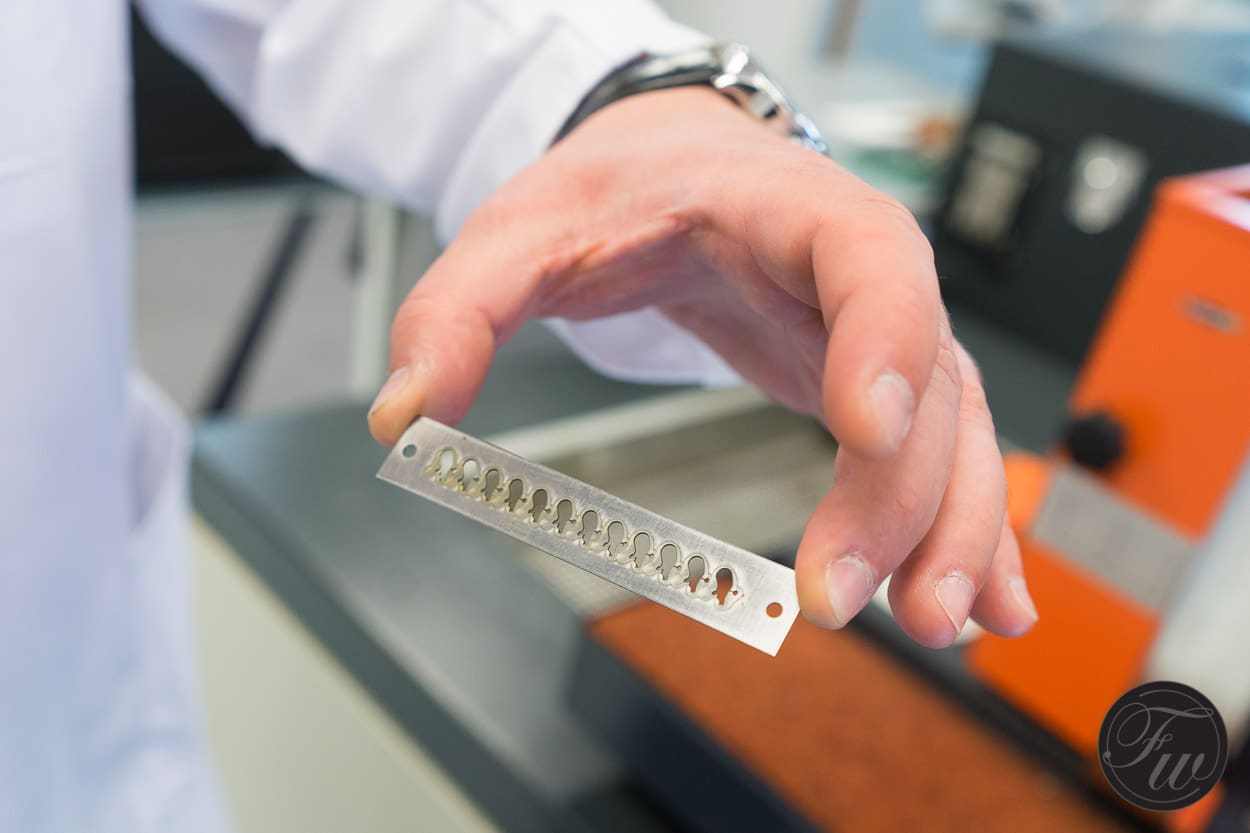
Tiny parts are being cut – or actually burnt – from brass and steel strips. A very small wire is used to ‘burn’ through the sheets of thin brass and steel. This method is a ‘spark erosion’ process. The parts that are created using this method consists of levers, swanneck springs, bridges, plates, wheels and so on. The bigger work, like the main plate of the movement, is done using CNC machines.
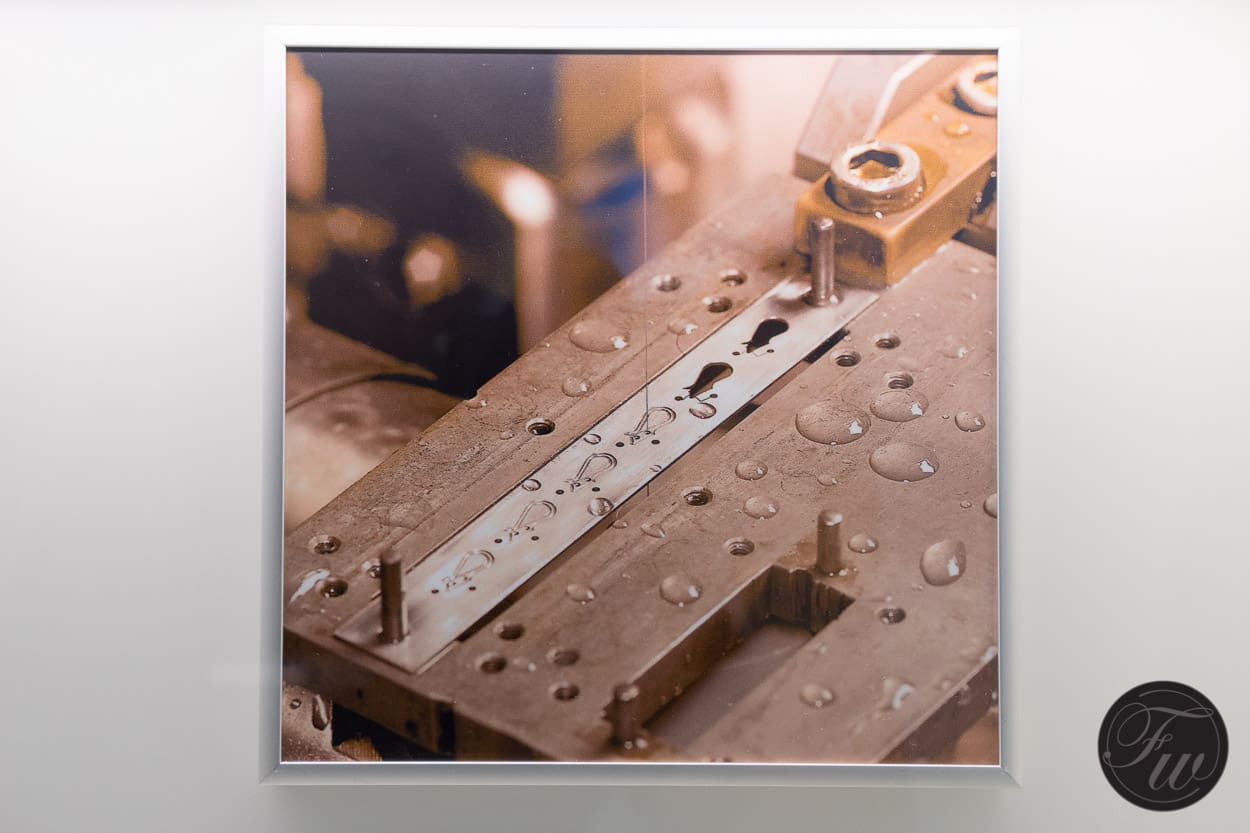
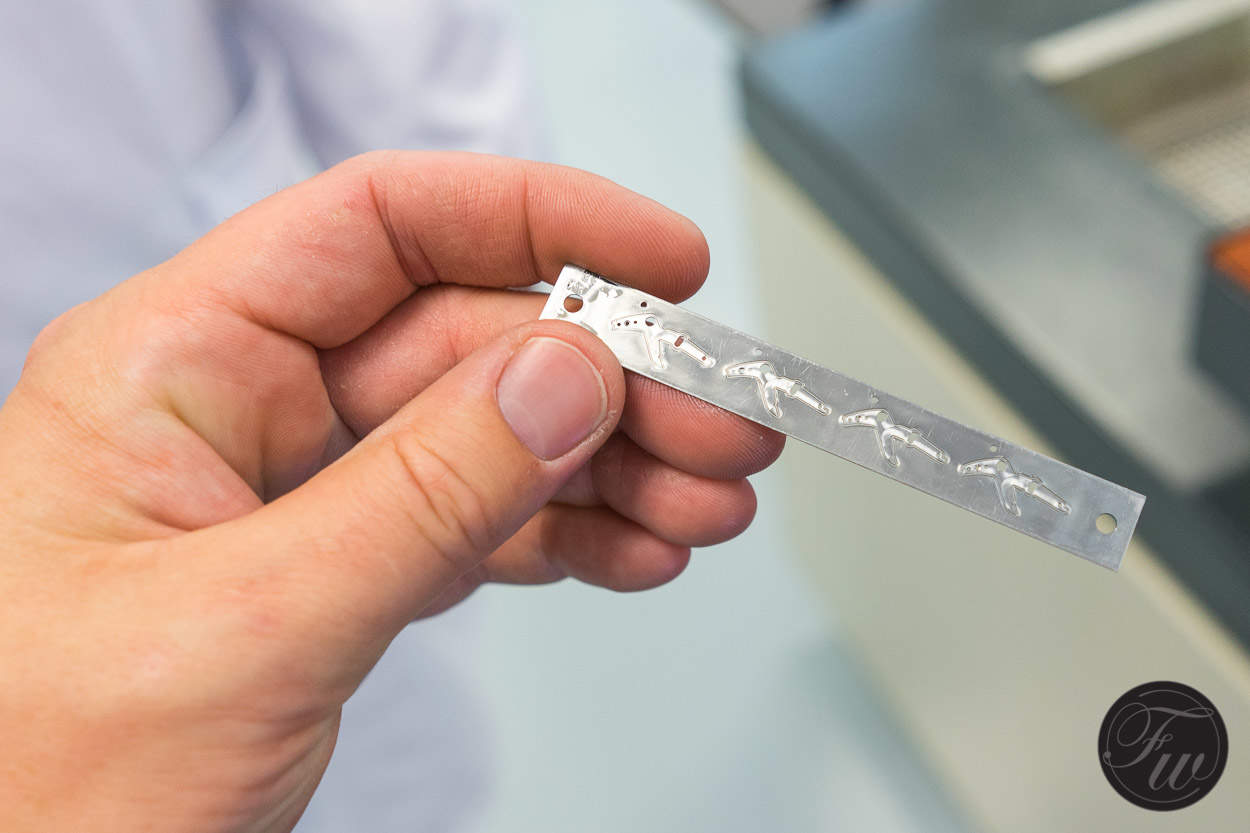
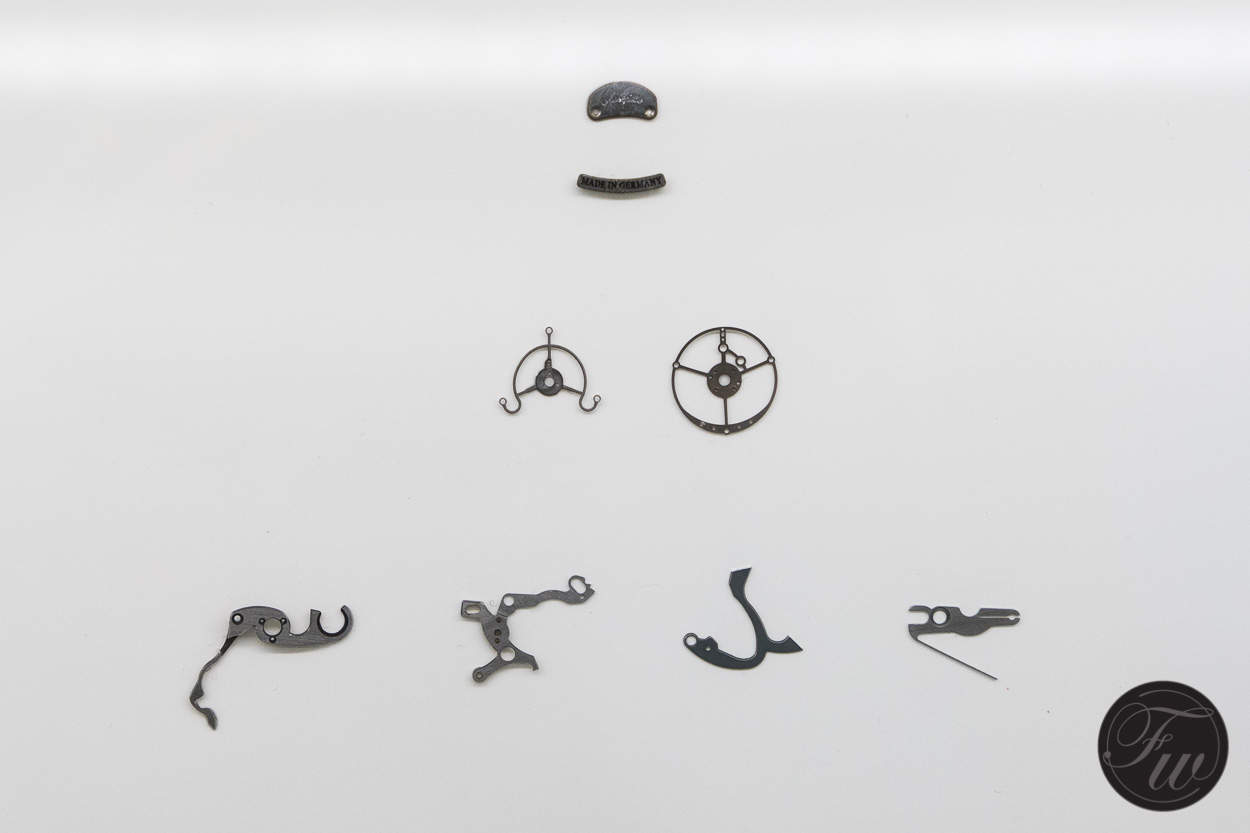
Movement Baseplates
After seeing the impressive work on tiny movement parts, we walk towards the other end of the building. But still ground floor, as the big machines require a very solid constructed underground. On the other end, we find the CNC machines that are used for the drilling and milling of movement baseplates. It is a crowded room, where a couple of machines are currently programmed to mill brass movement baseplates for various different calibers. Somehow, I was a bit surprised by the number of people who are working on these floors. Programming, operating, monitoring and validating the results requires quite some (human) capacity.
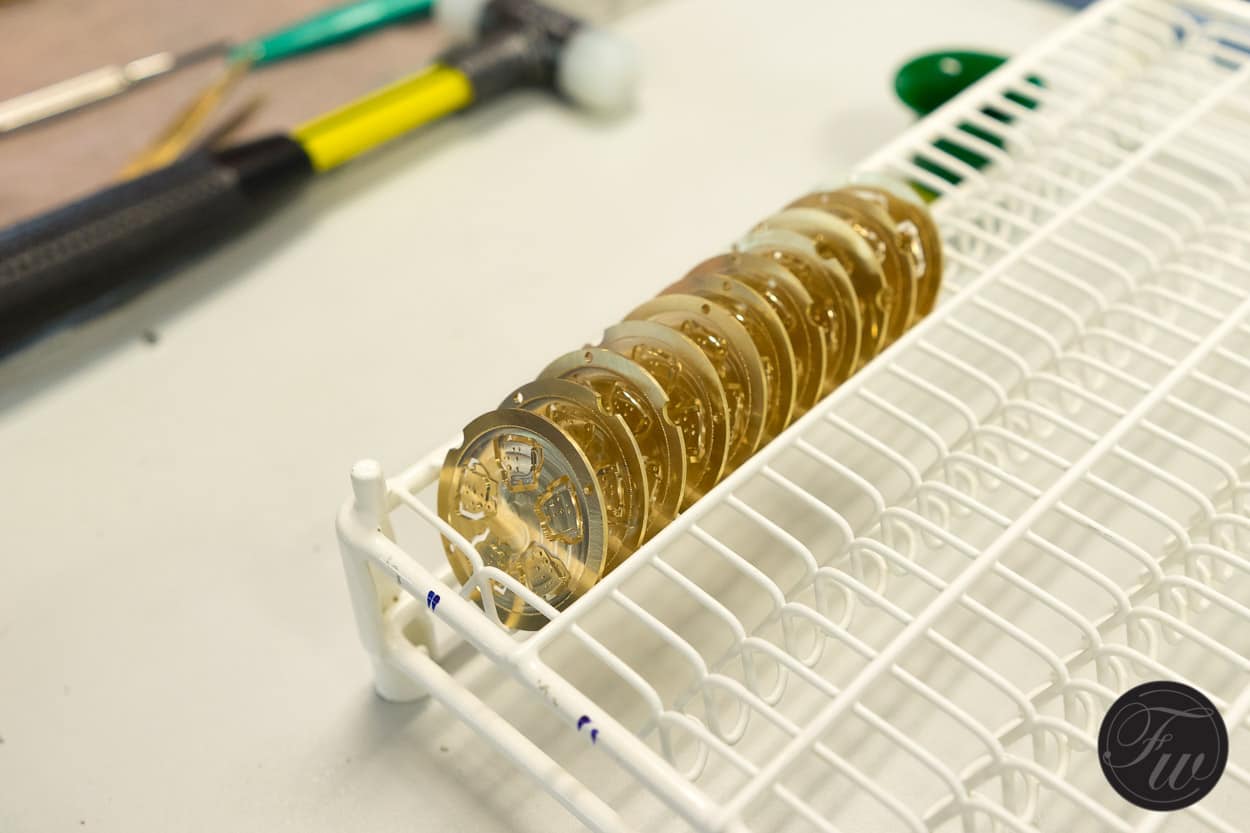
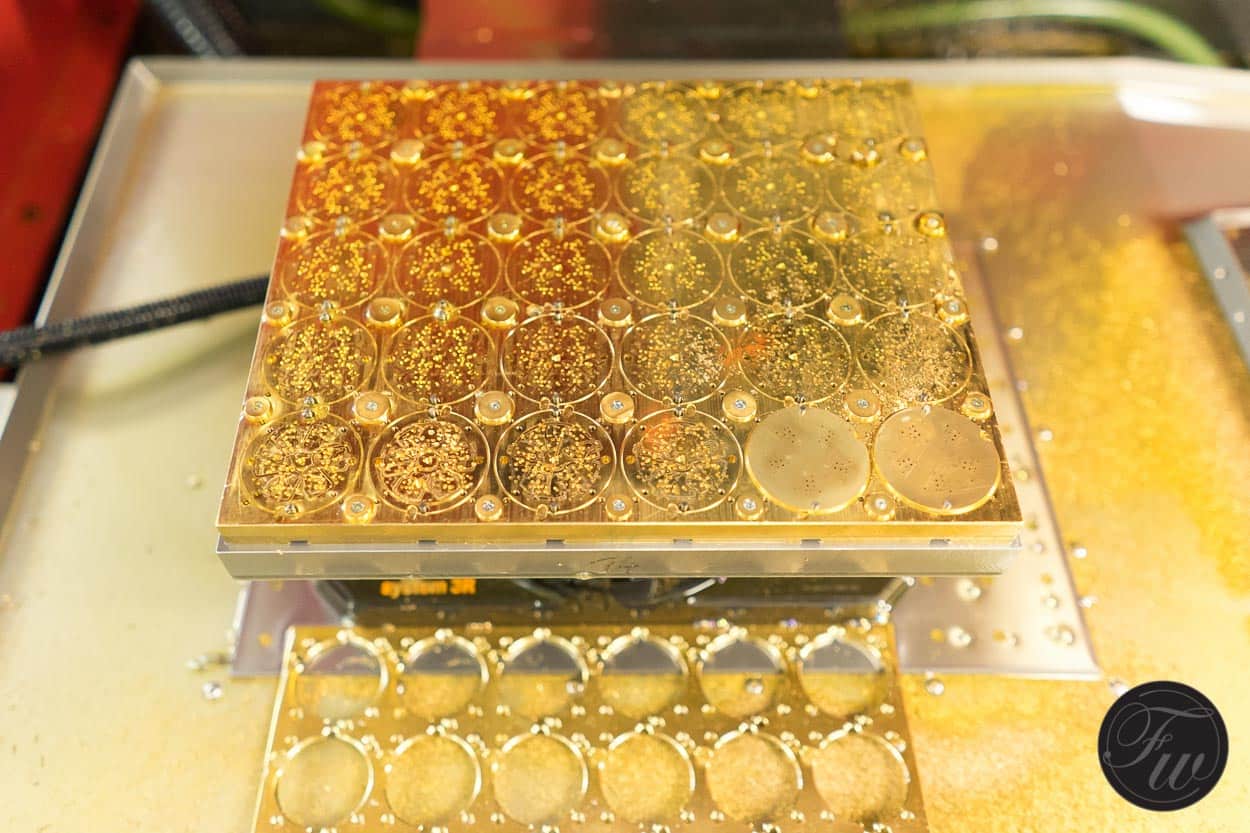
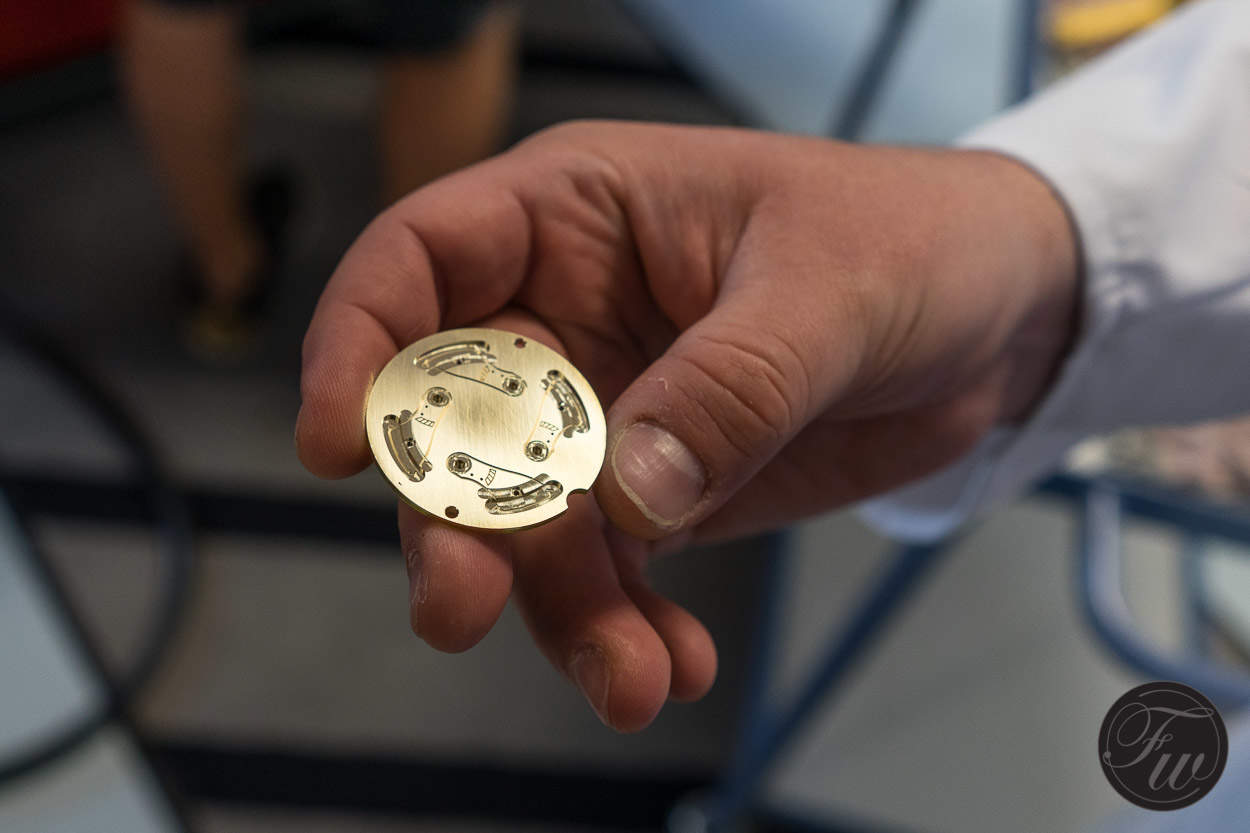
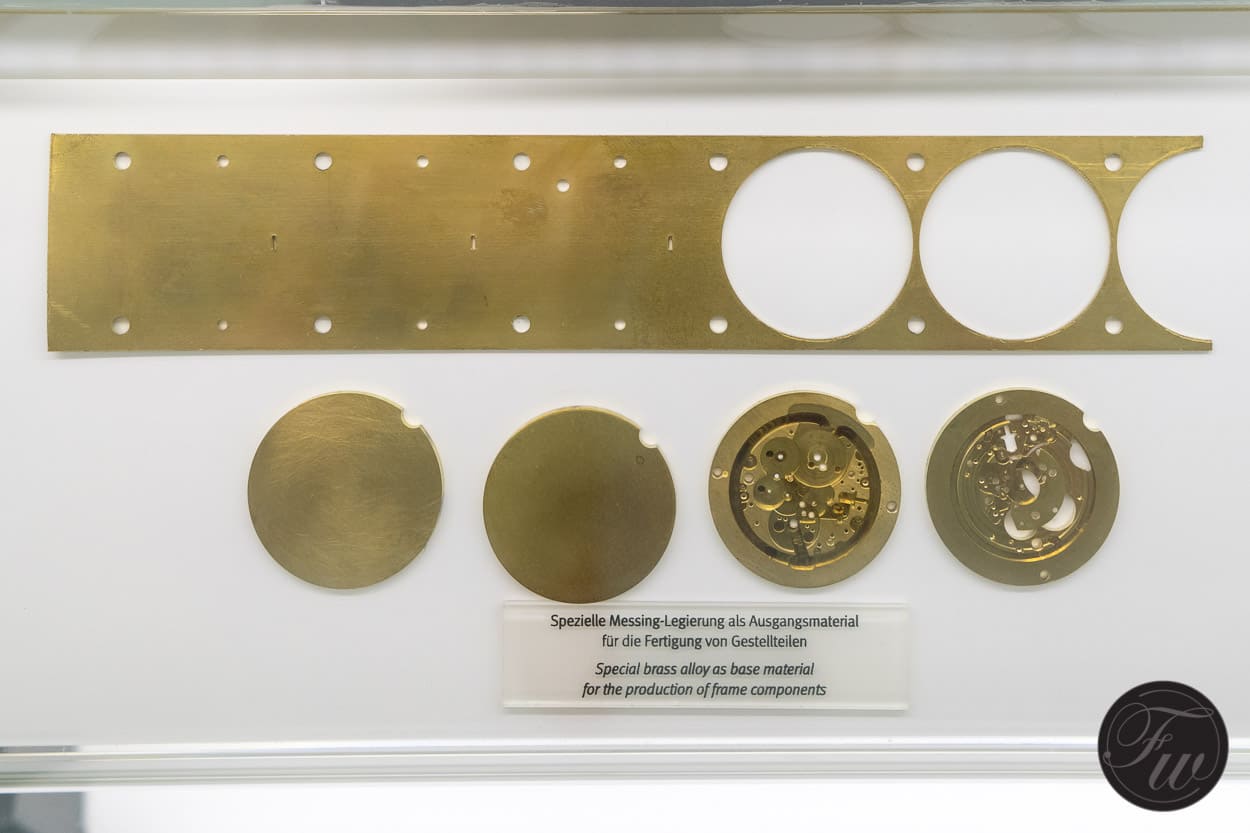
Tools
As a short side note, I have to add that the Glashütte Original manufacture is also responsible for the production and maintenance of most of the tools used for watchmaking. The Alfred Helwig School of Watchmaking does not only train young watchmakers, there are also students that learn the trade of toolmaker. These toolmakers are very important to Glashütte Original, as they will be responsible for a large part of the watchmaking equipment.
Finishing of the Baseplate
When the movement baseplates are ready, they go to the department where they receive already a bit of finishing. The movement are placed on a machine that is used to create a perlage finish. Although the machine does the turning of the tool on the baseplate, the machine needs careful operation by an expert. It requires the right touch and pressure to get good results. Another type of finish is the Glashütte striping. Very similar to Côte de Genève.
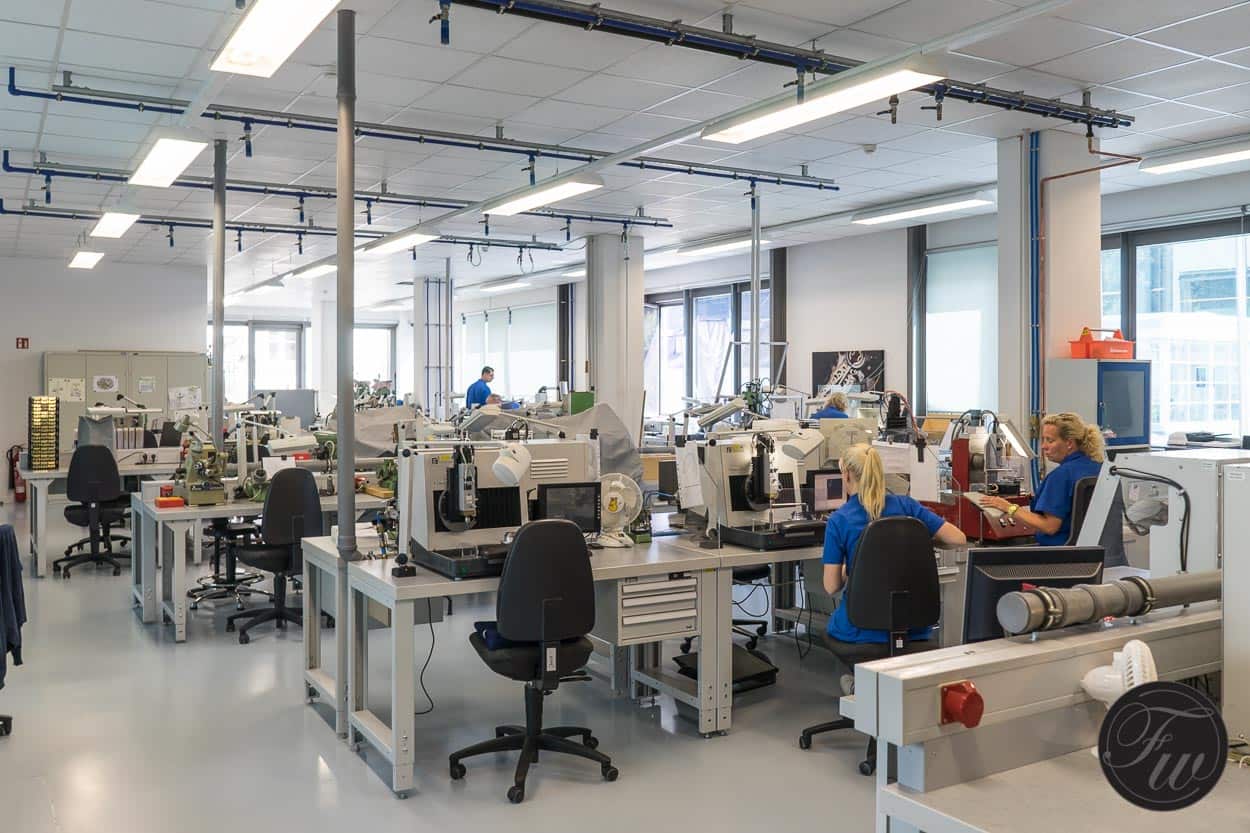
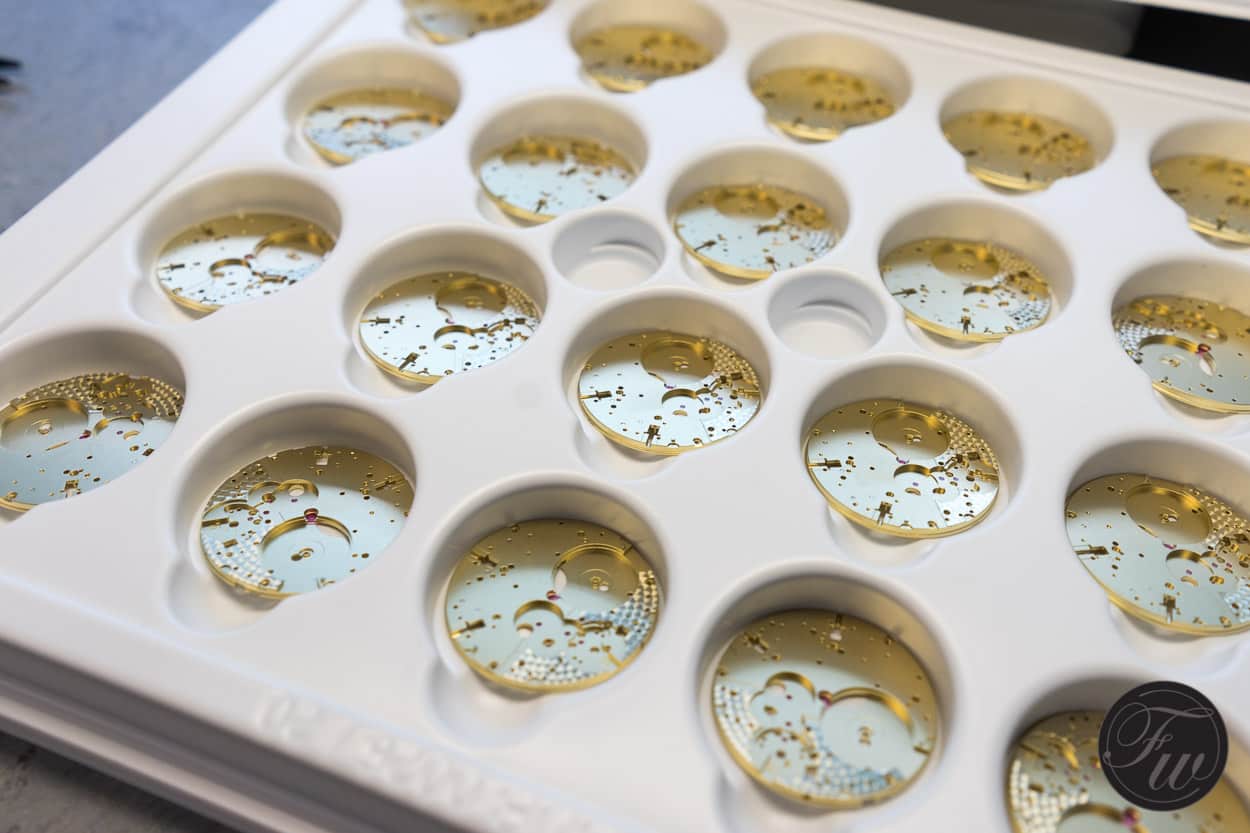
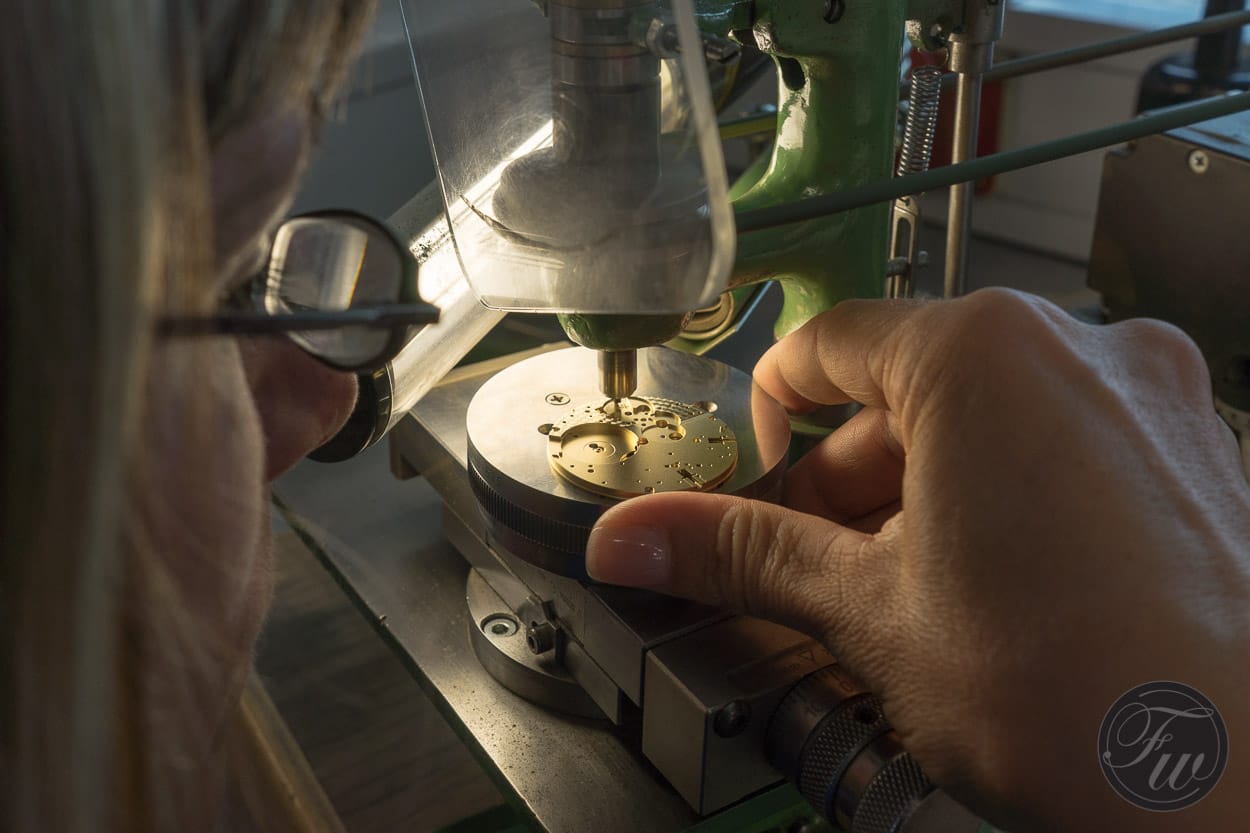
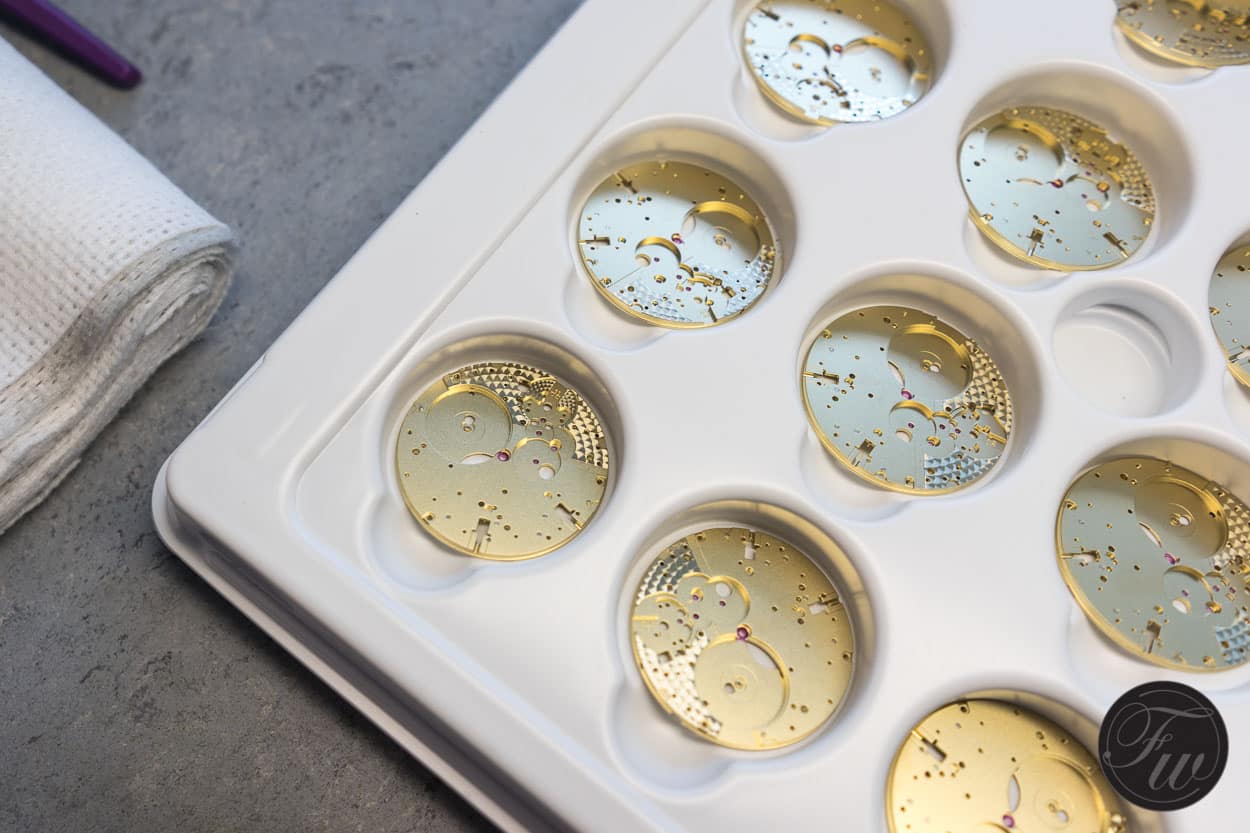
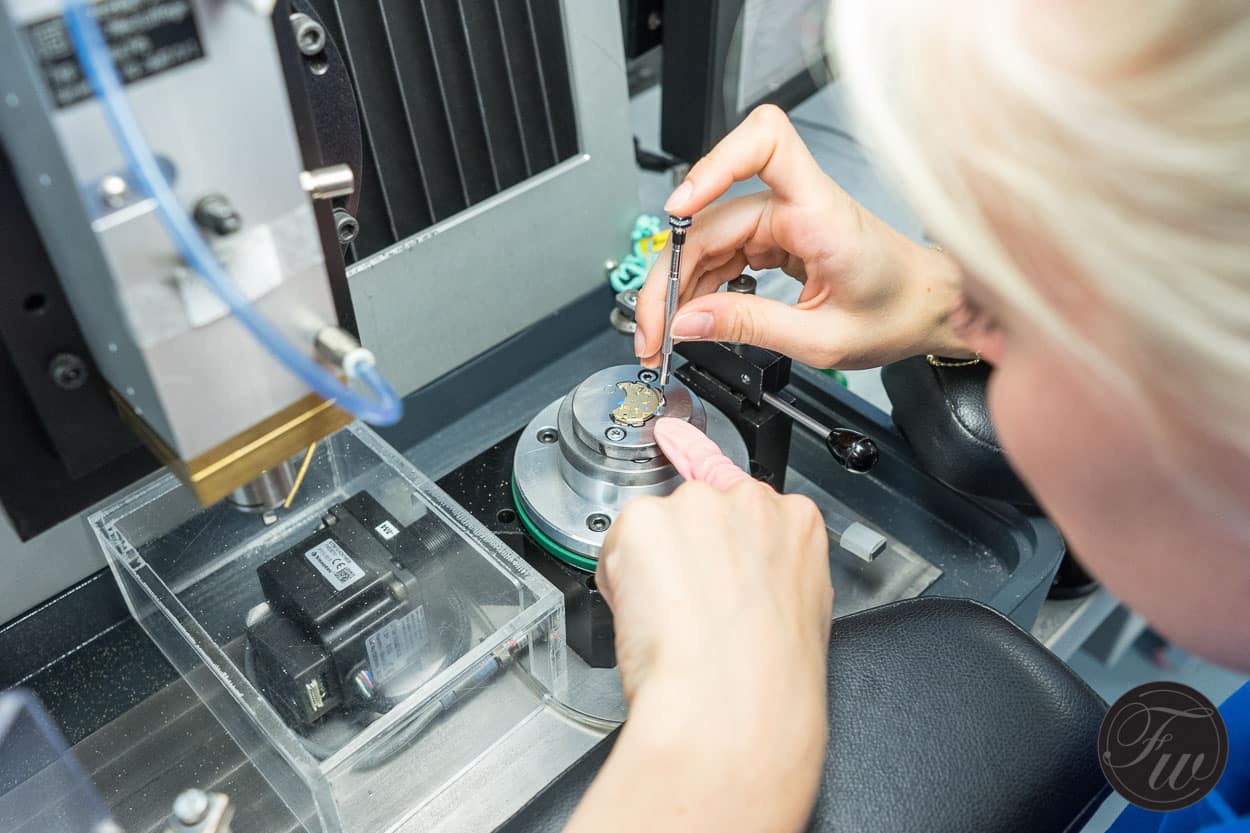
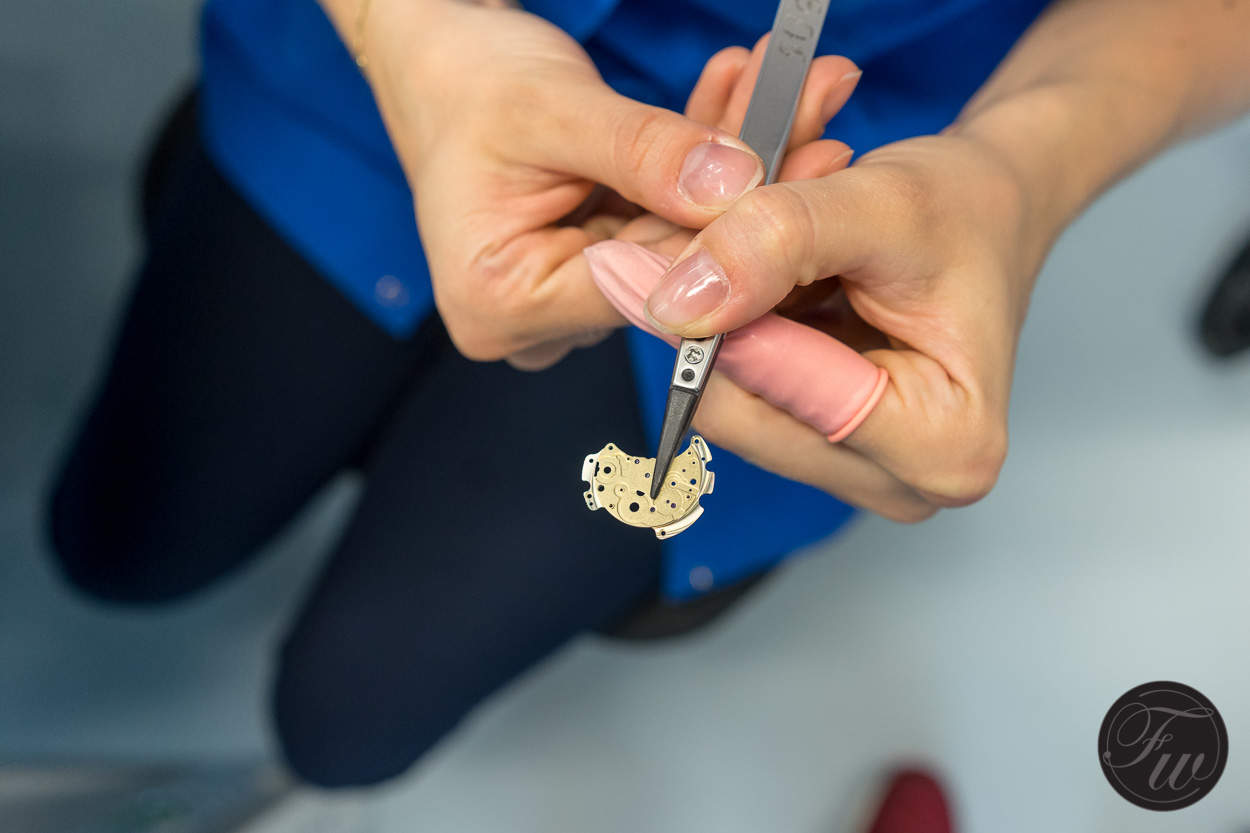
In a later stage, the movements receive their toxic baths for the rhodium plating, to get that beautiful color.
Wheels, Gears and Spring Barrels
A movement baseplate also needs gears and wheels of course. Glashütte Original also produces these in-house. With machinery that doesn’t look to be very modern, components are being tooth-cut. These machines are still capable of meeting the requirements with very small tolerances. We weren’t allowed to go in there, but had a look through the window of the department. Below, the results on display.
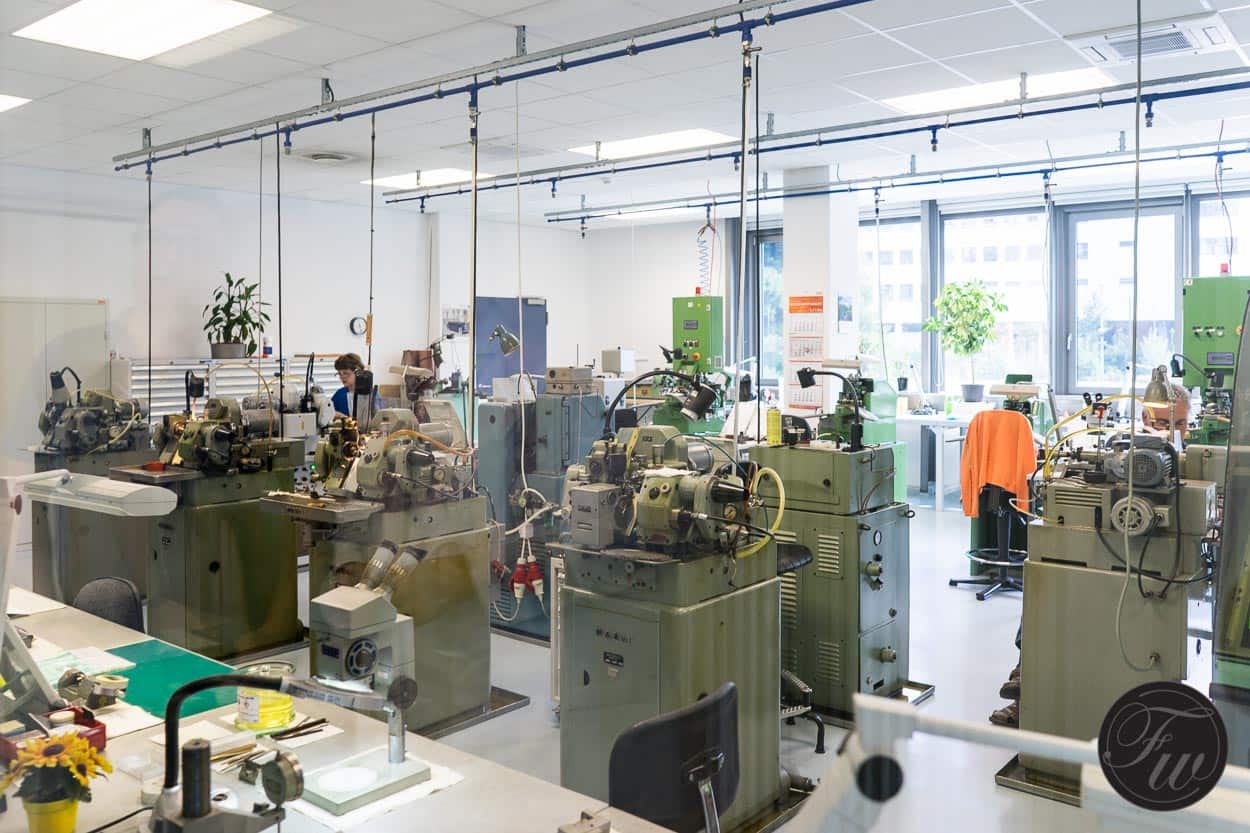
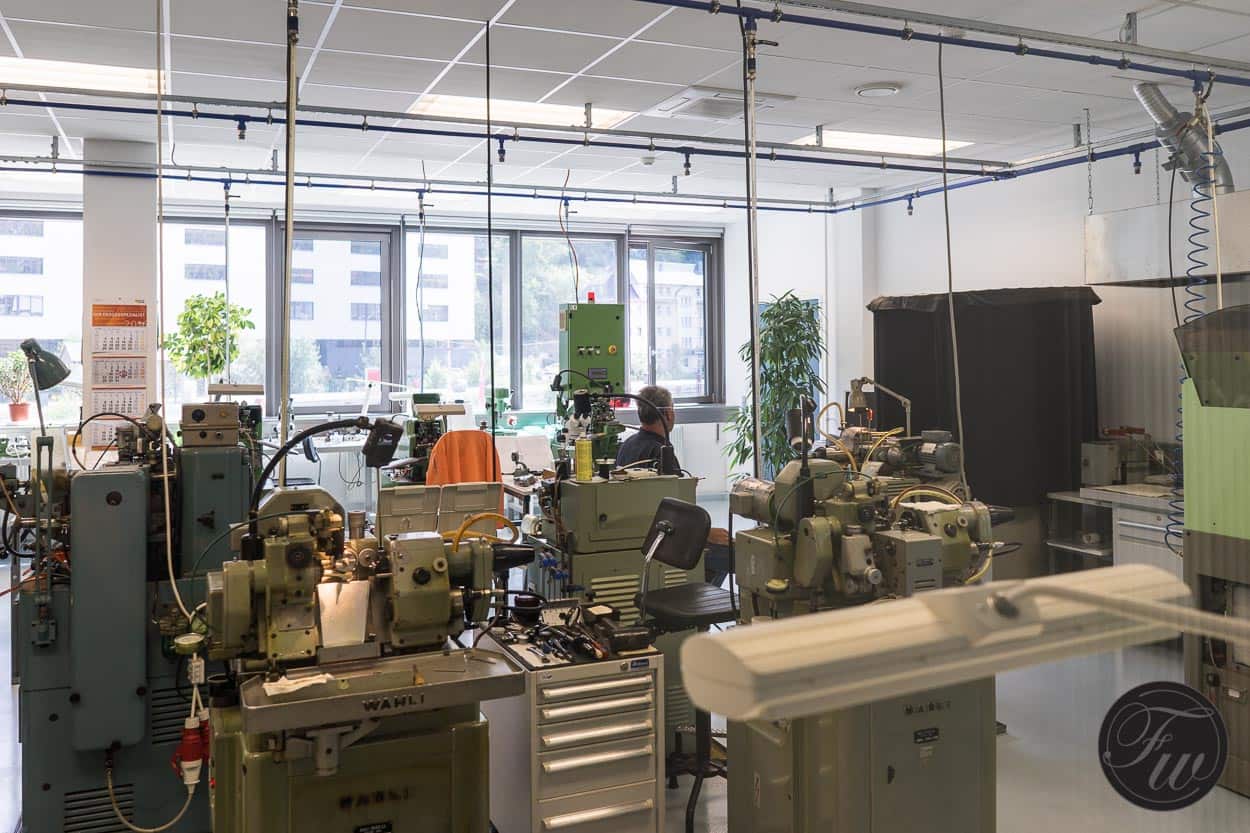
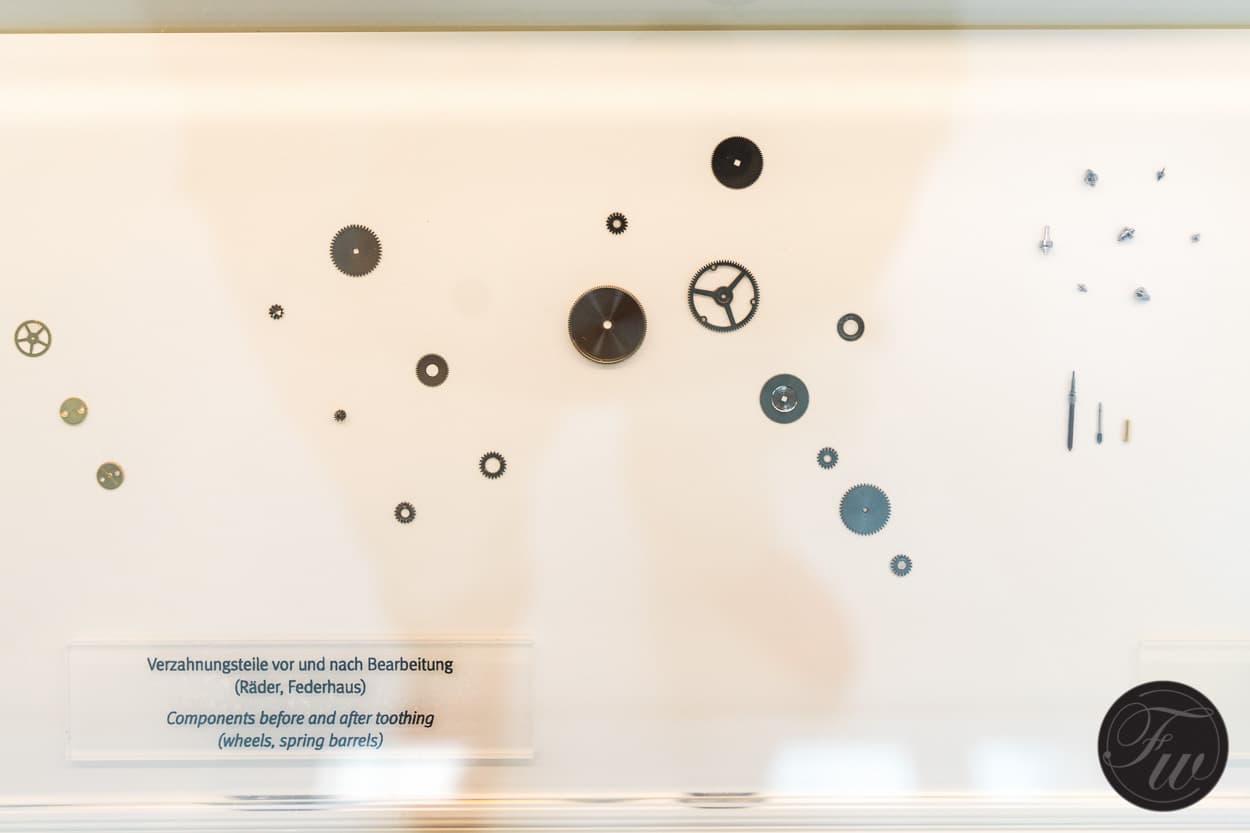
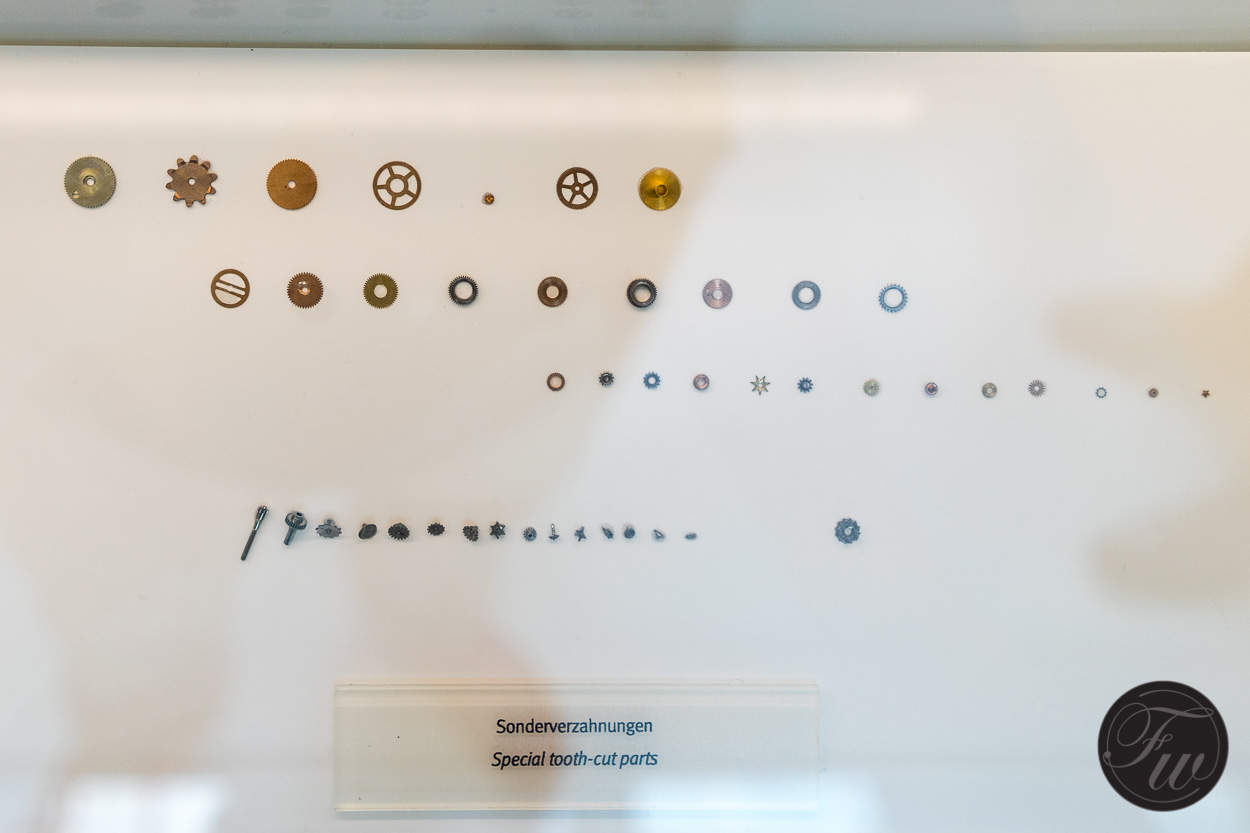
Jewel Setting
One of the few components that is not being made in-house is the jewel, or (synthetic) ruby. So they come in via a supplier. They need to be set into the movement though. Some calibers uses a chaton for the ruby (which is only for aesthetical reasons these days), but in other calibers they are set without. Below, the jewel setting in progress. A painstaking job, with these tiny parts.
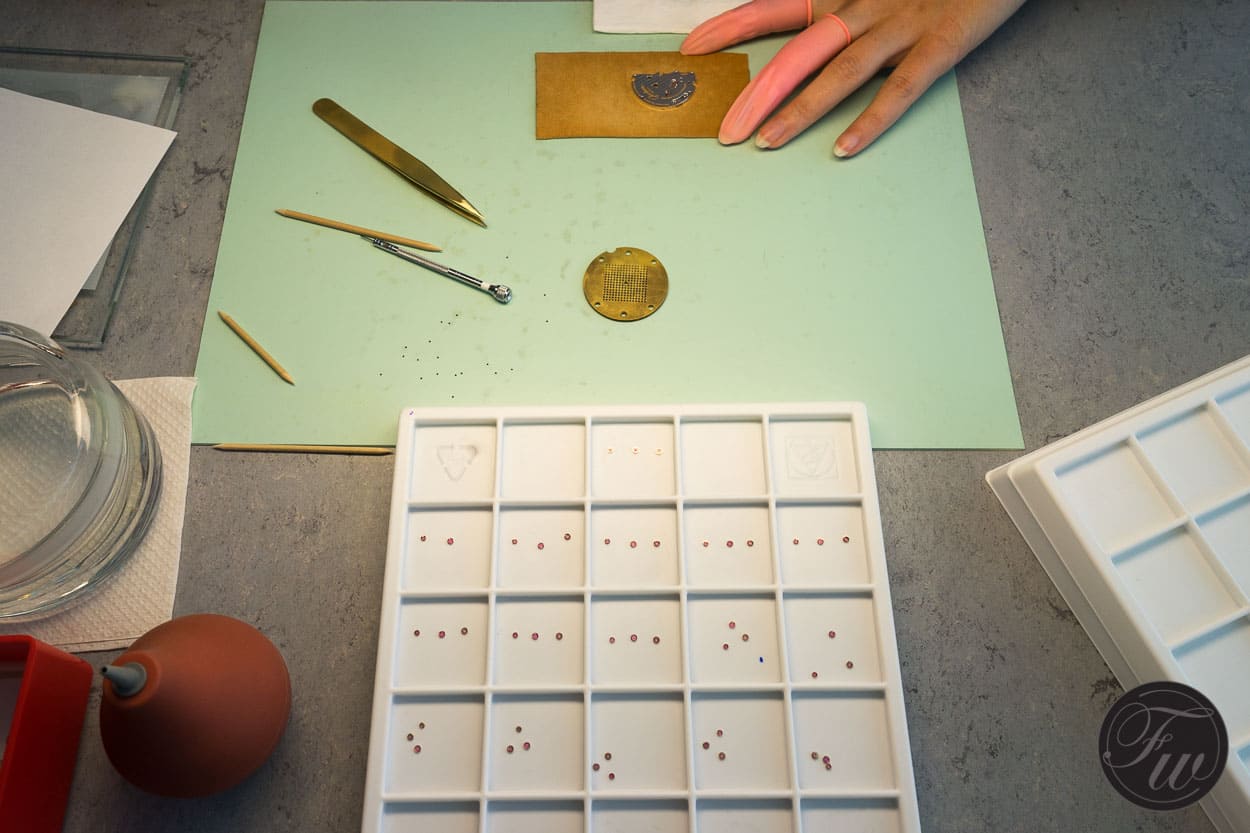
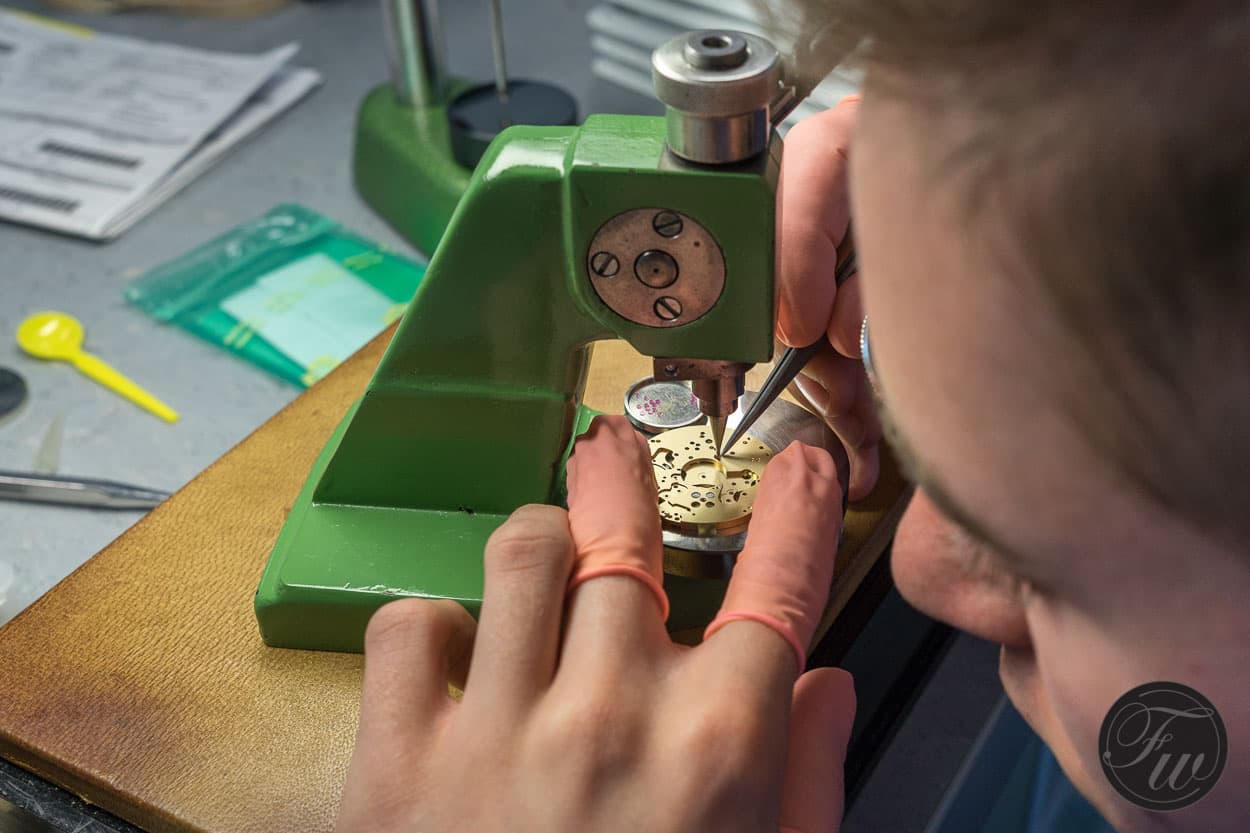
In this department, it is not only about setting jewels, we also see other components being added or completed for the assembly of the movement in a later stage. Like the rotor for example.
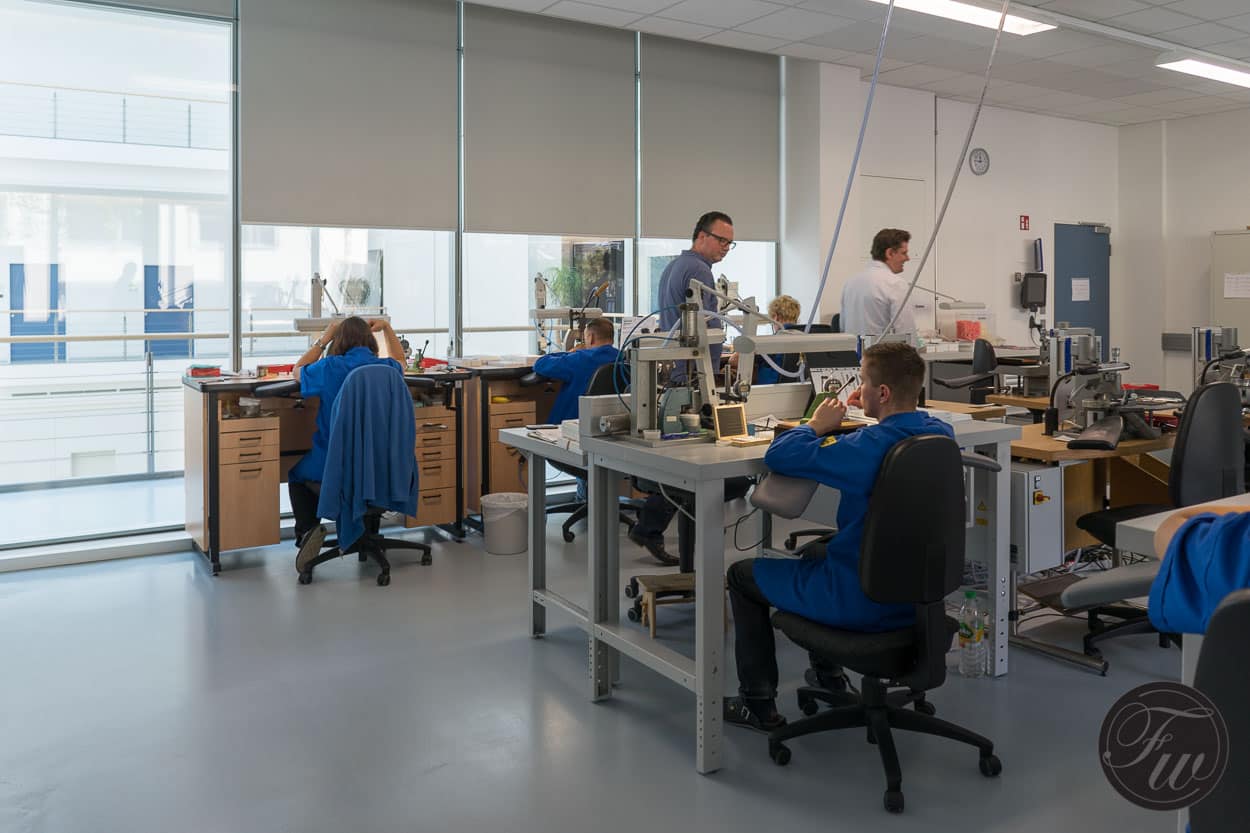
Hand-Finishing
Bert and I also received a demonstration by a skilled watchmaker (now trainer and ‘demonstrator’) about beveling and polishing edges as well as blueing screws. The difference is that with beveling, the surface gets its shine by pressure on the material instead of holding it to a tool that makes a rotating movement (polishing). Furthermore, the watchmaker showed us how the balance bridge with balance wheel and spring are added to the movement resulting in the watch coming to live. We will publish short movies that we made on this process on our instagram account (@fratellowatches).
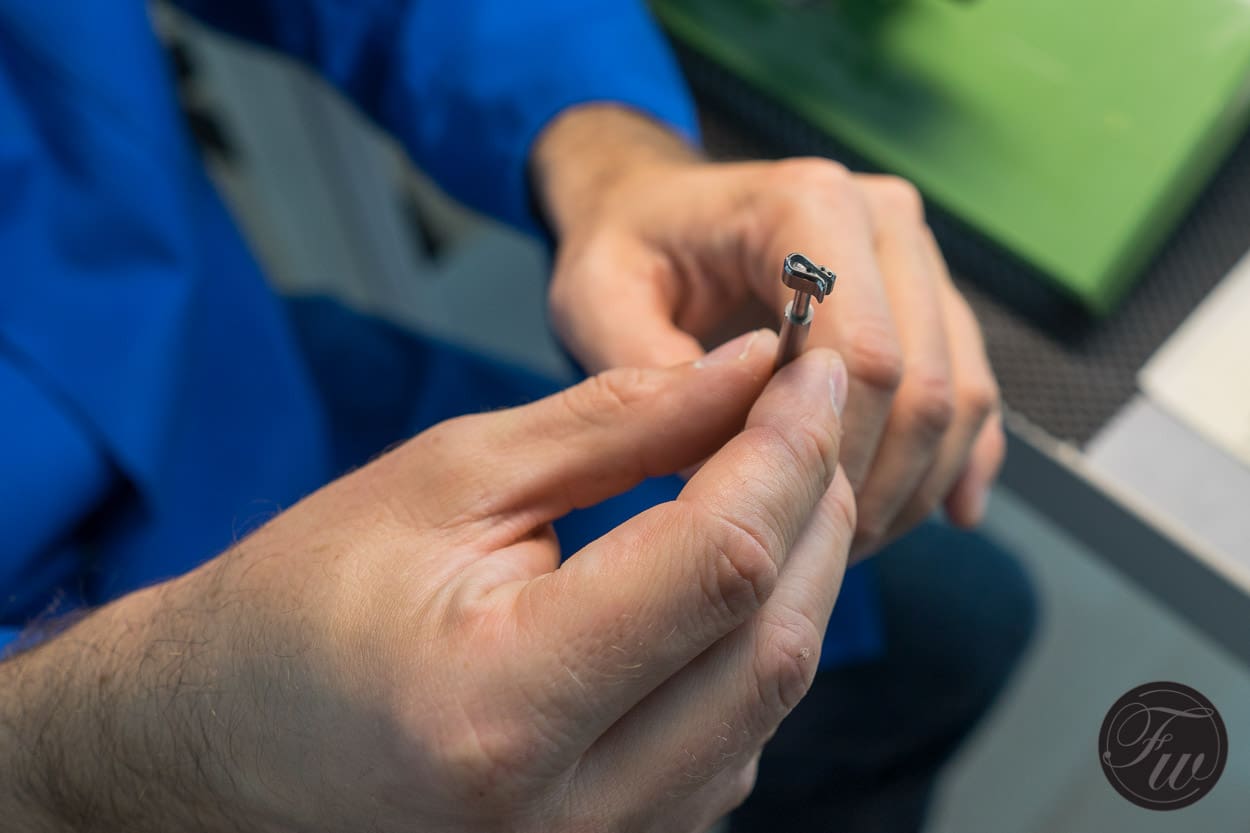
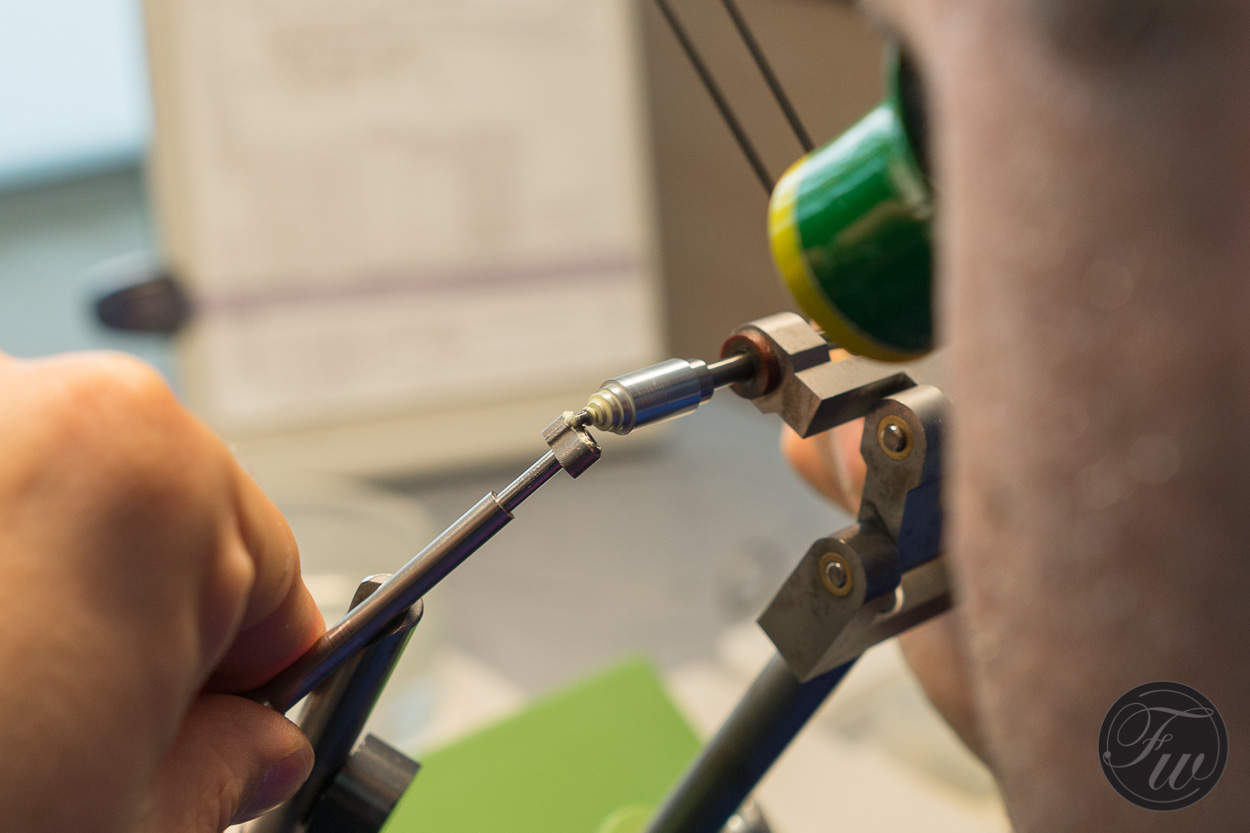
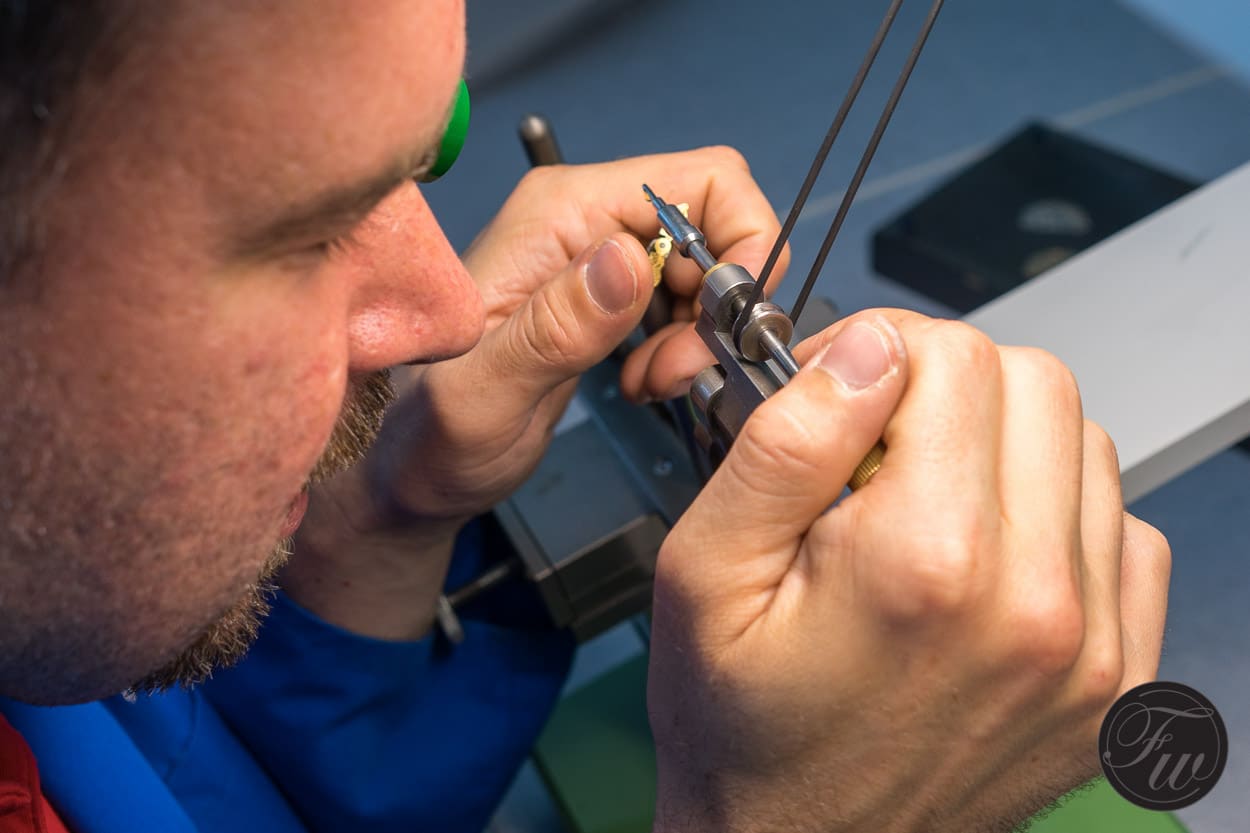
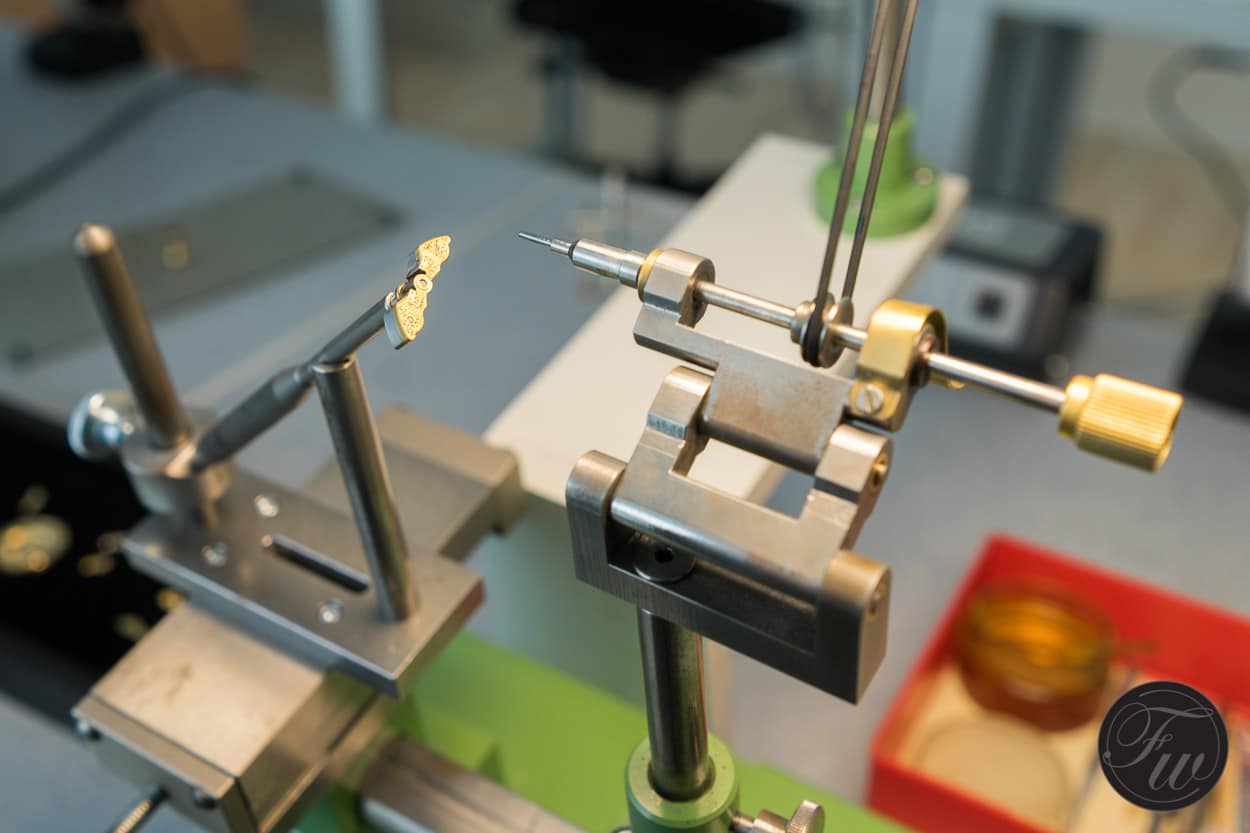
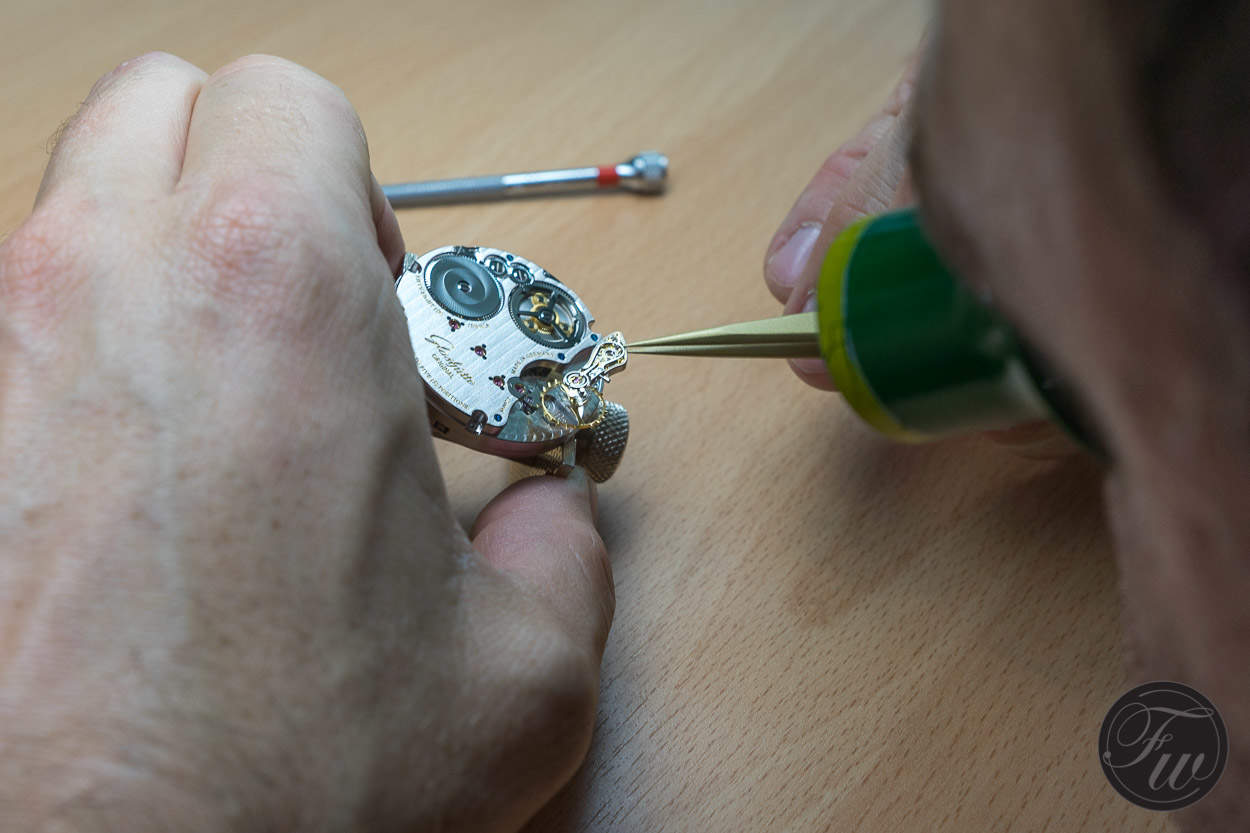
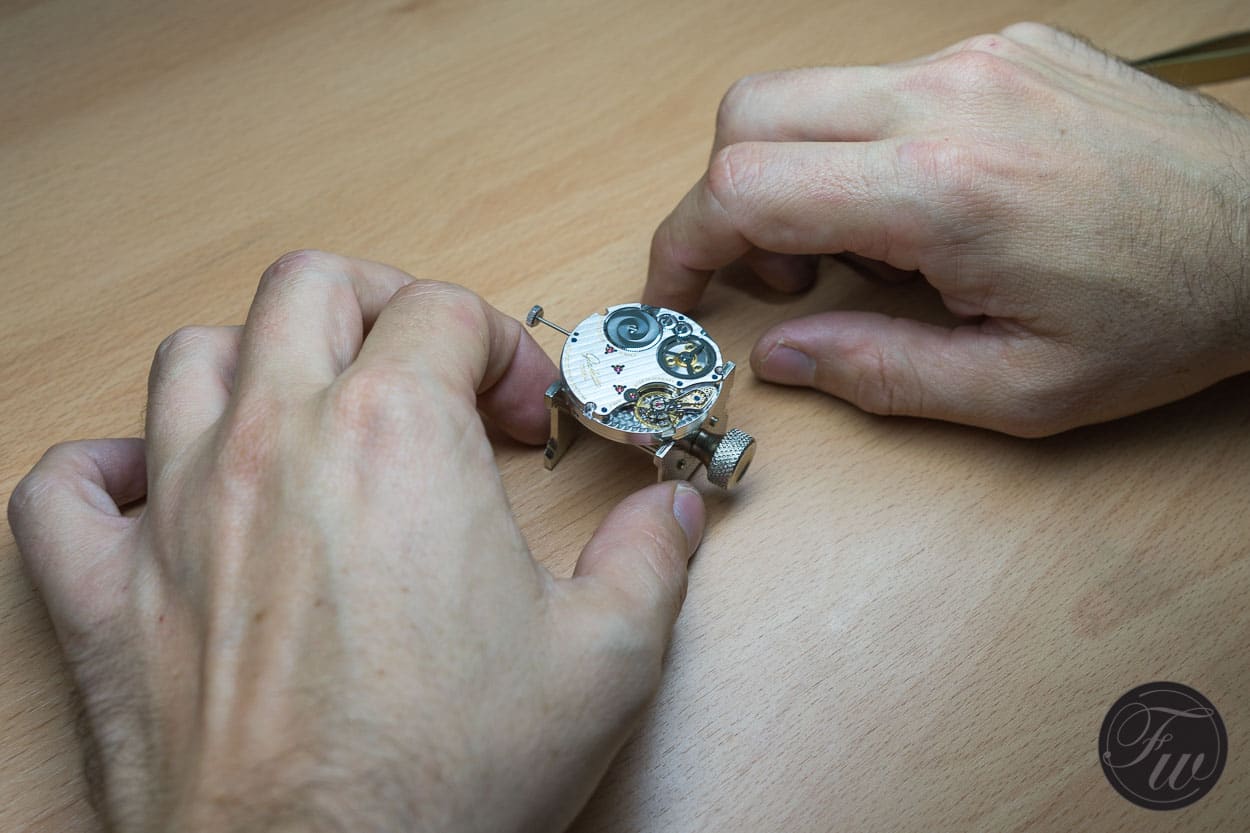
We also received a demonstration on blueing screws. An interesting process, that we’ve witnessed before in other manufactures. It is all about timing and the right temperature.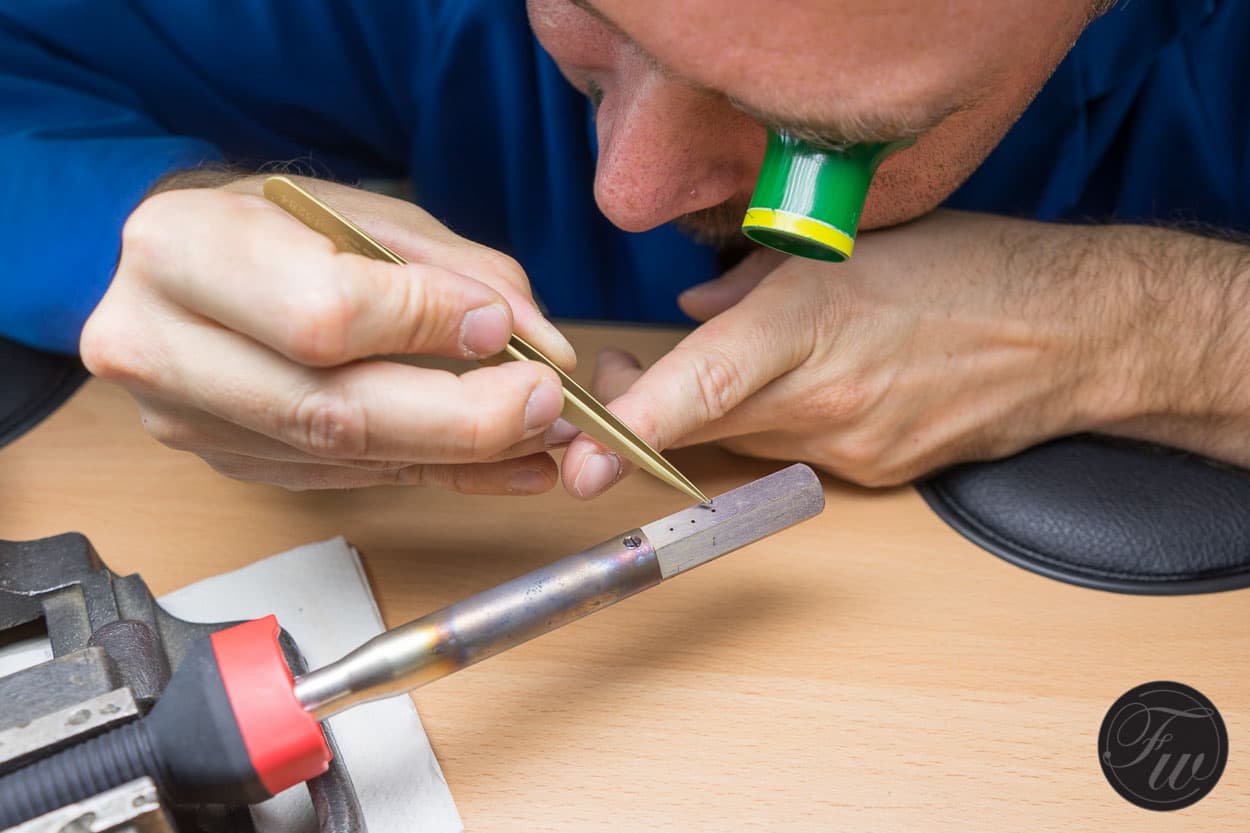
Assembly
When all parts and components are ready, checked and finished, it is time for the assembly. This is being done on the fourth floor of the Glashütte Orginal Manufacture building. With lots of light and in a dust free environment. We couldn’t enter as the dust free environment didn’t allow this, but everything done in that department is visible through the large windows in the hallway. Just like the master watchmaker department, where they work on complicated movements.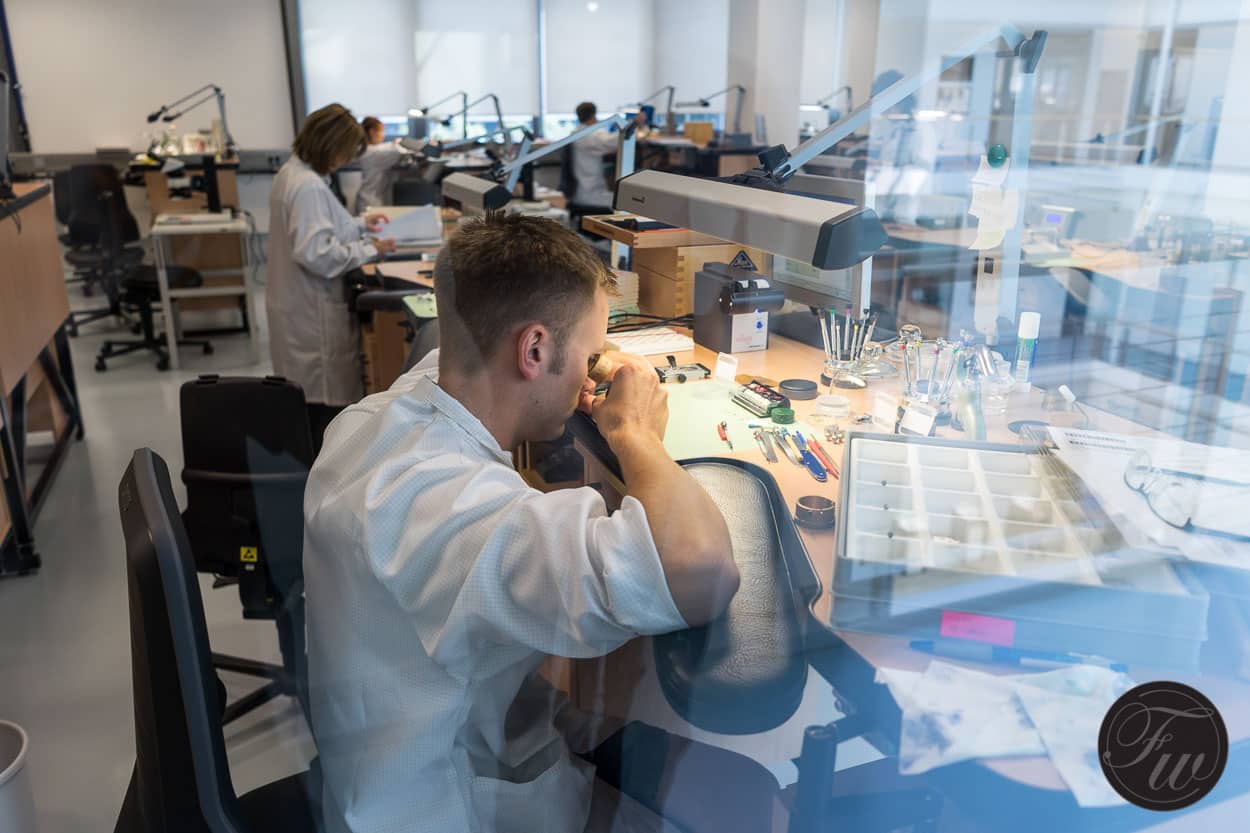
It is this floor where watches like the Glashütte Original Senator Cosmopolite come to live. When the watches are assembled and tested, they are boxed up for shipment to the retailers and boutiques.
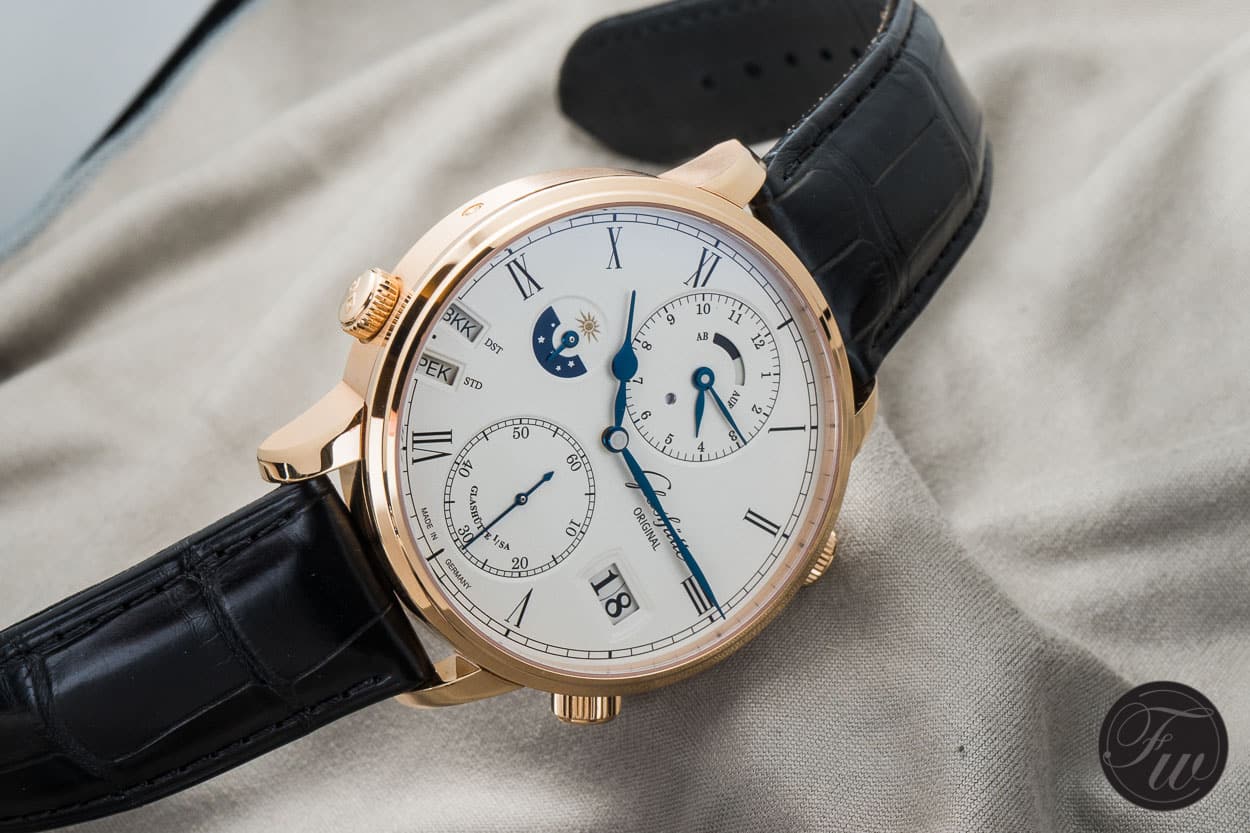
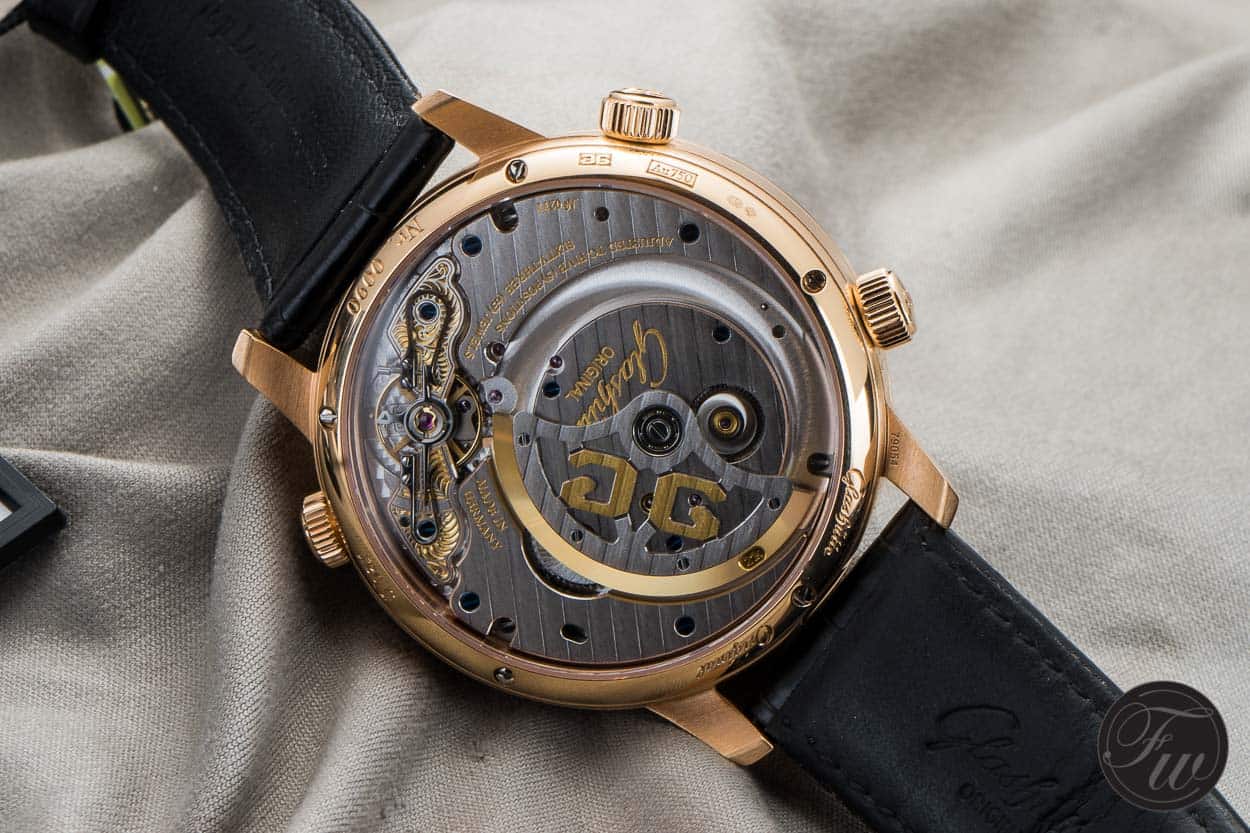
We also drove to the Glashütte Original boutique in Dresden to have a look at it and the boutique editions they carry for example. We will cover that in a later story.
In the gallery below, you can see some addition photos that Bert took during the Glashütte Original Manufacture visit. The manufacture can be visited by anyone, but only via appointment. Contact the Glashütte Original manufacture via this link for a guided tour.
We would like to thank the PR team of Glashütte Original for their warm welcome, great stay and excellent guided tour through their manufacture.

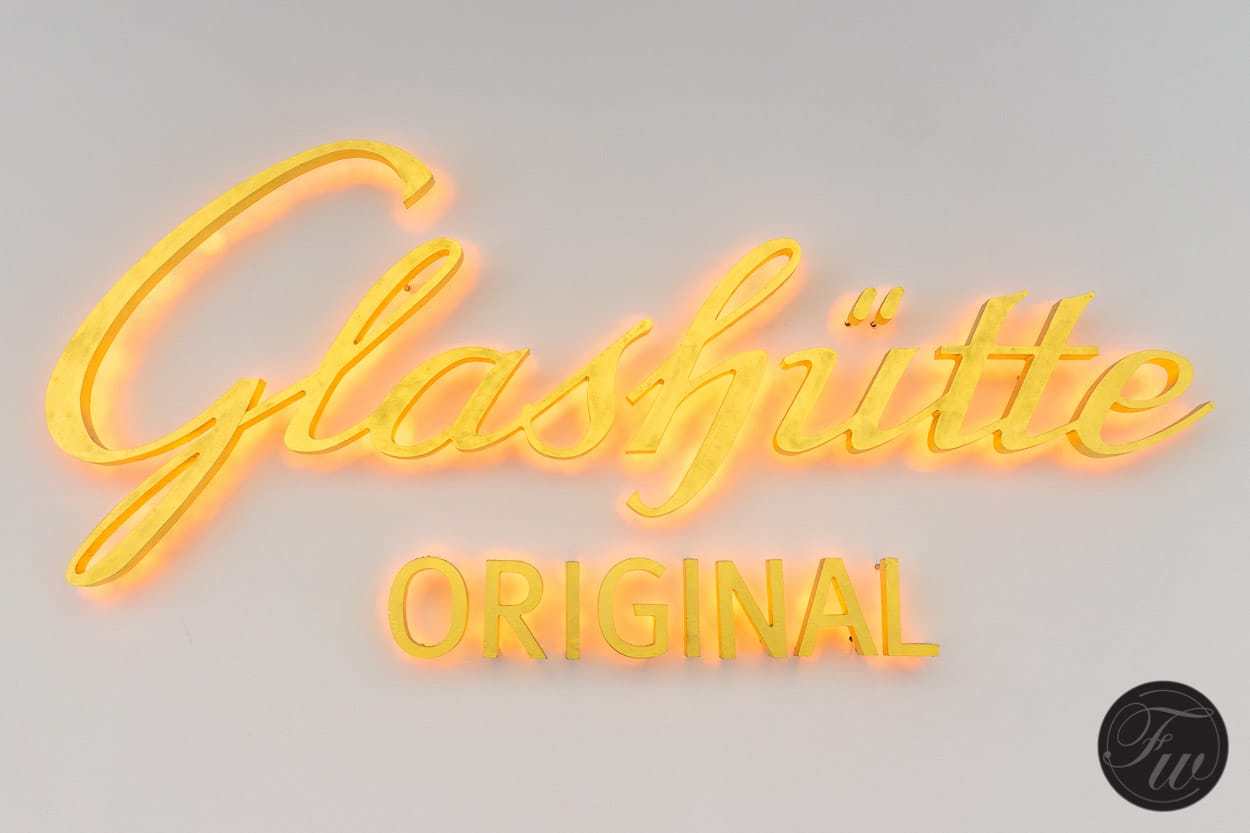
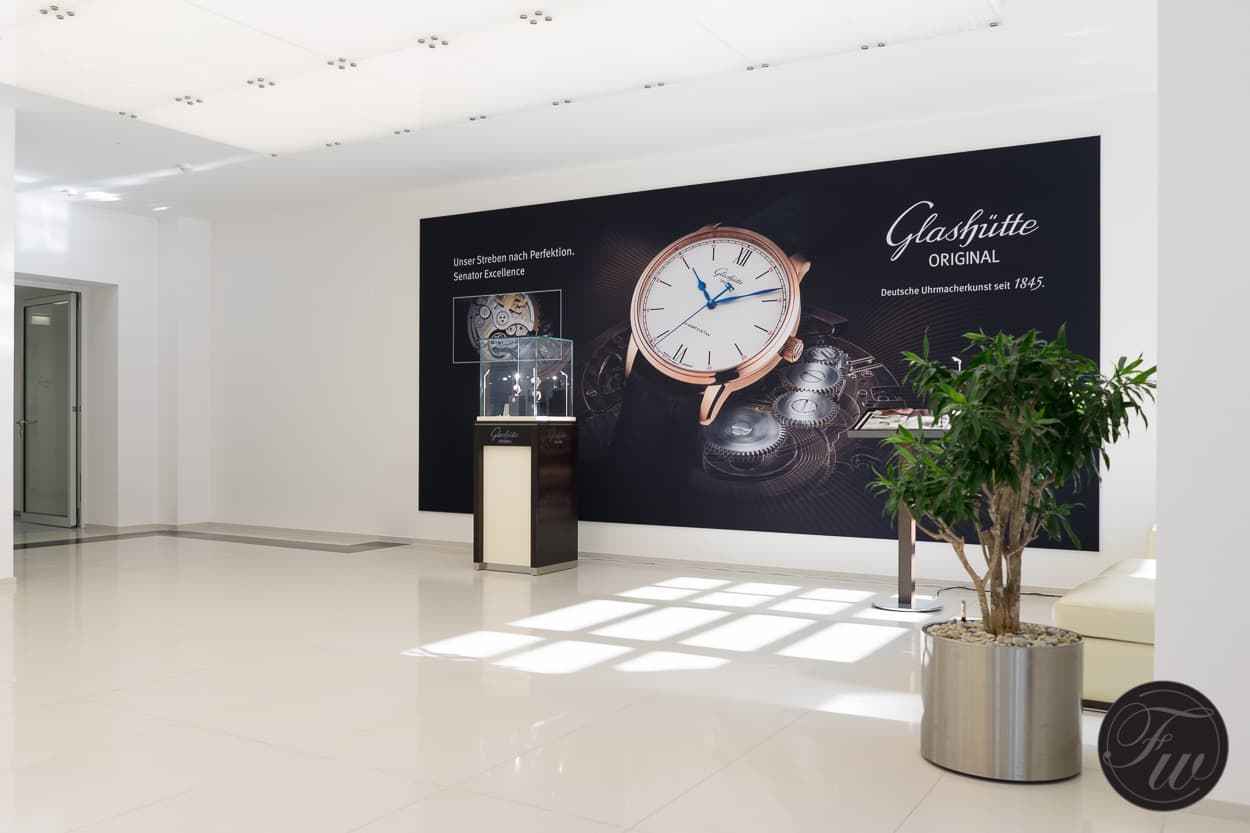
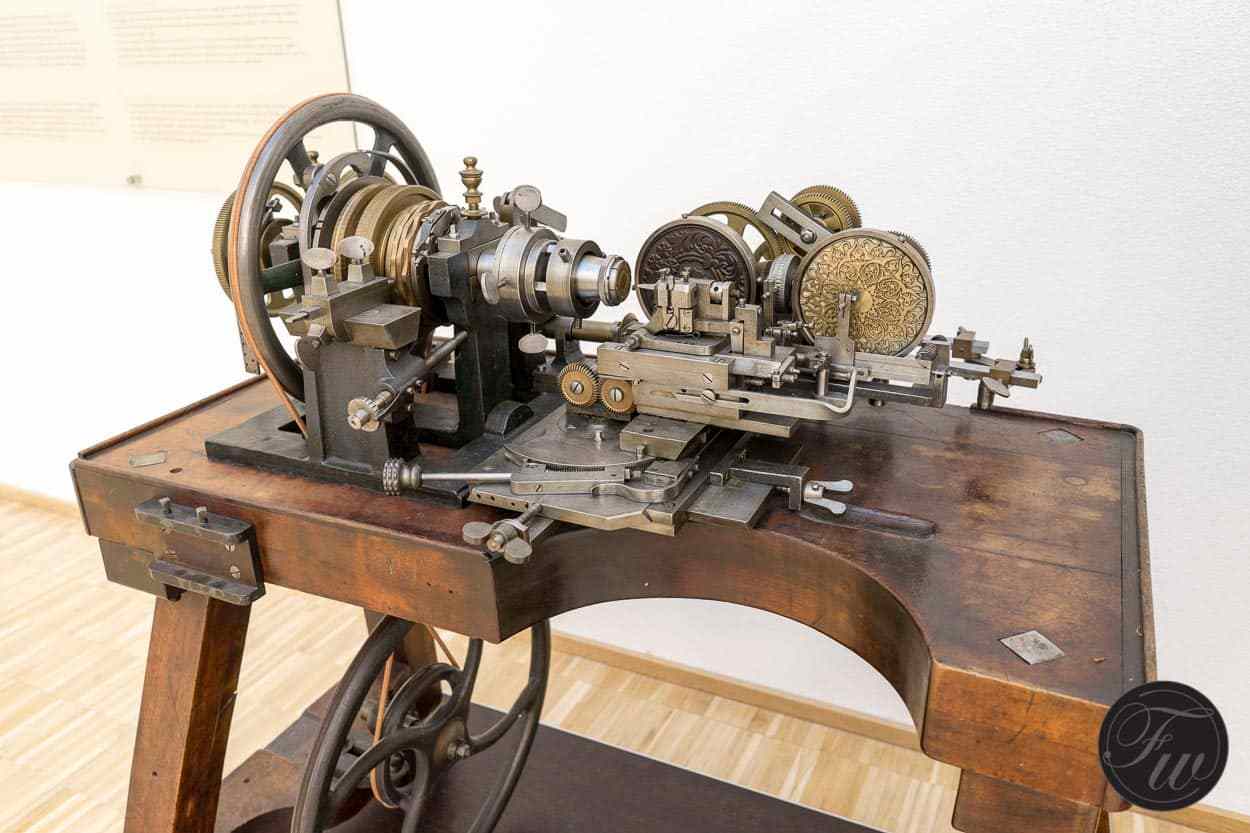
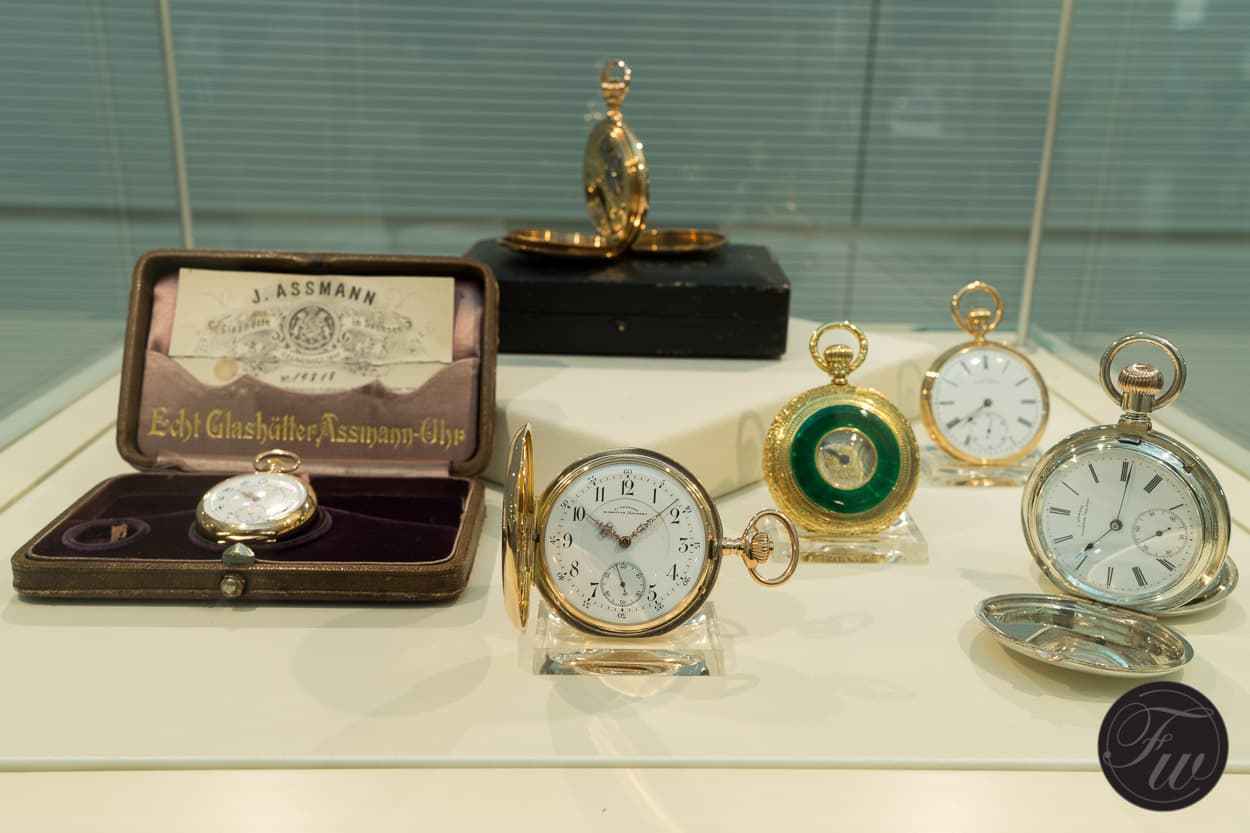
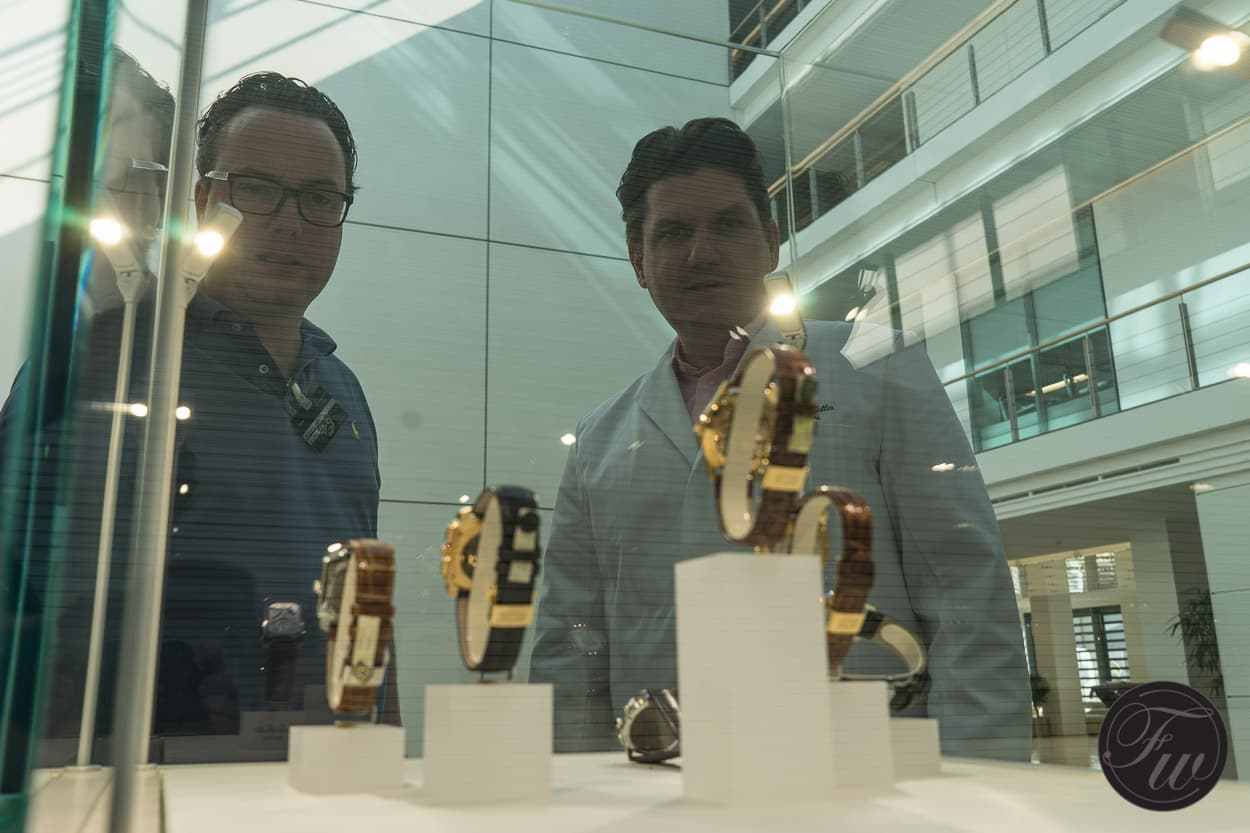
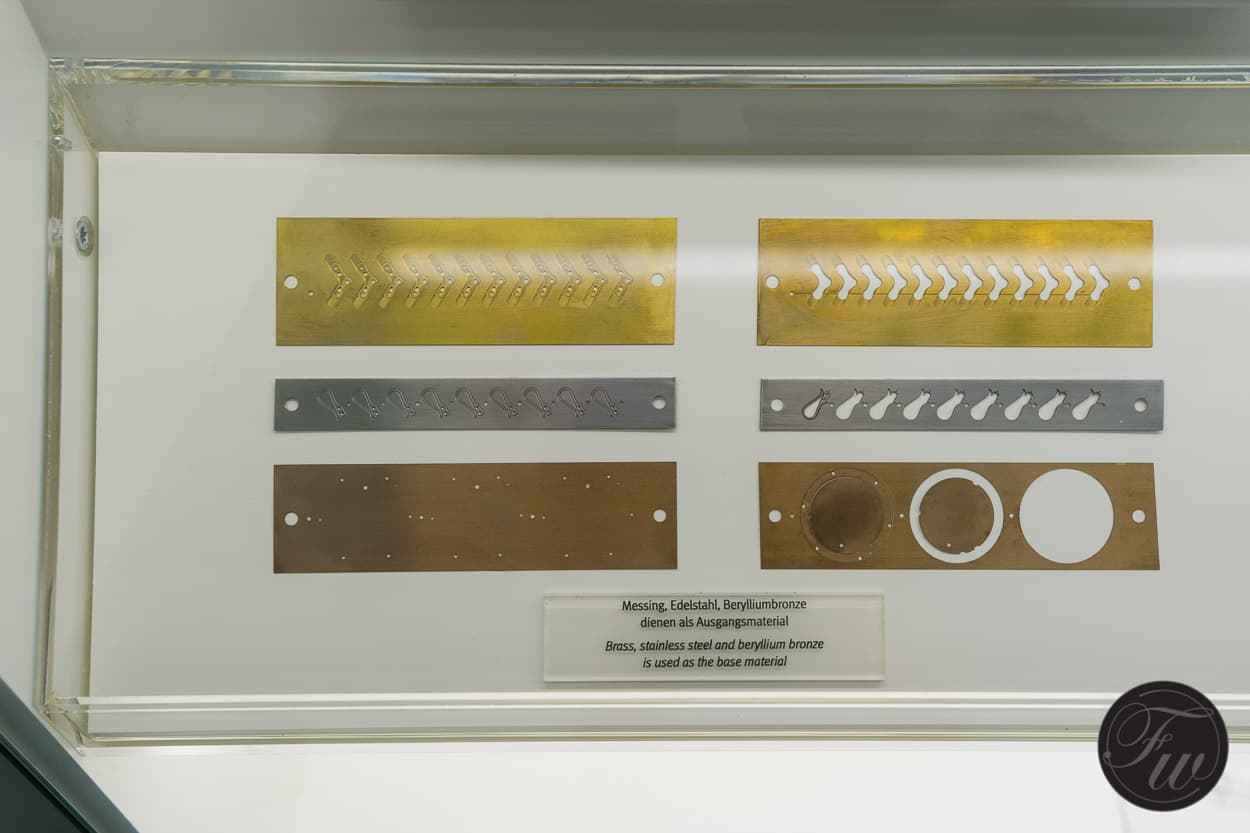
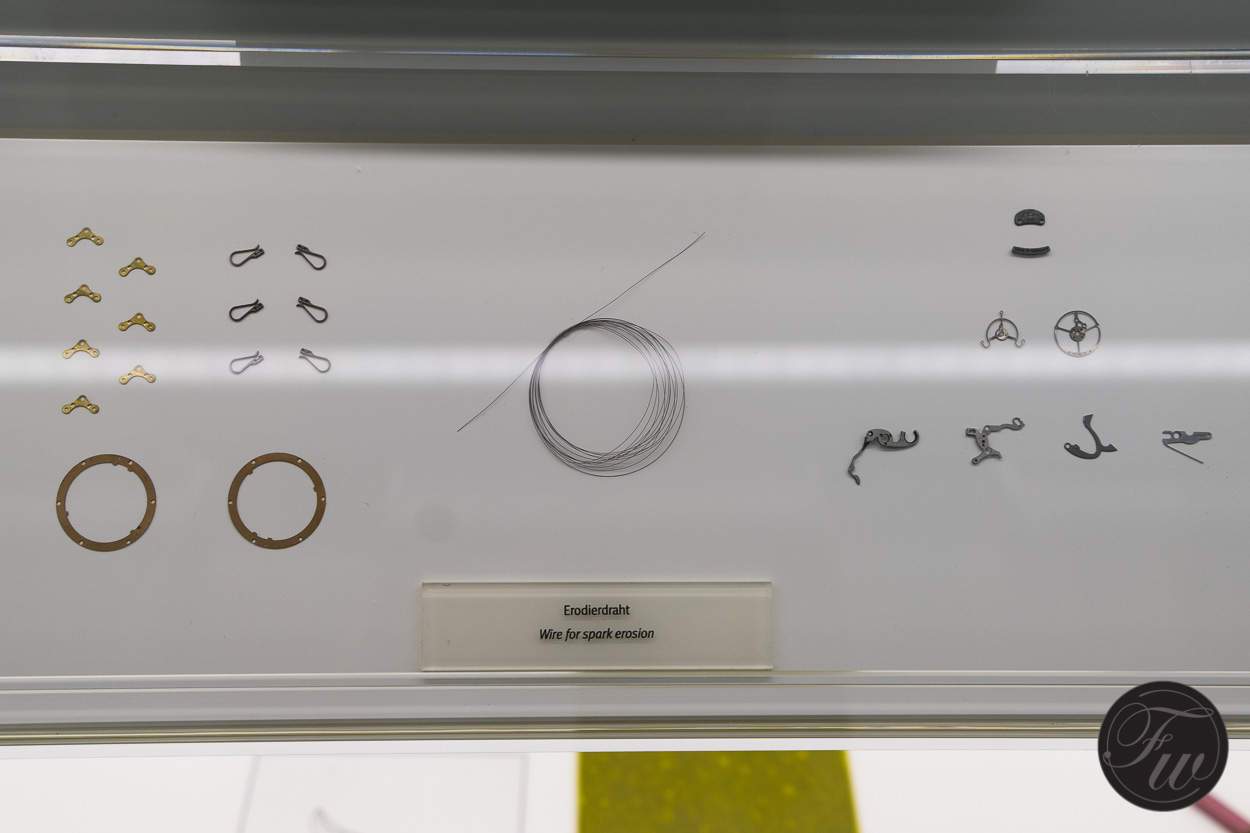







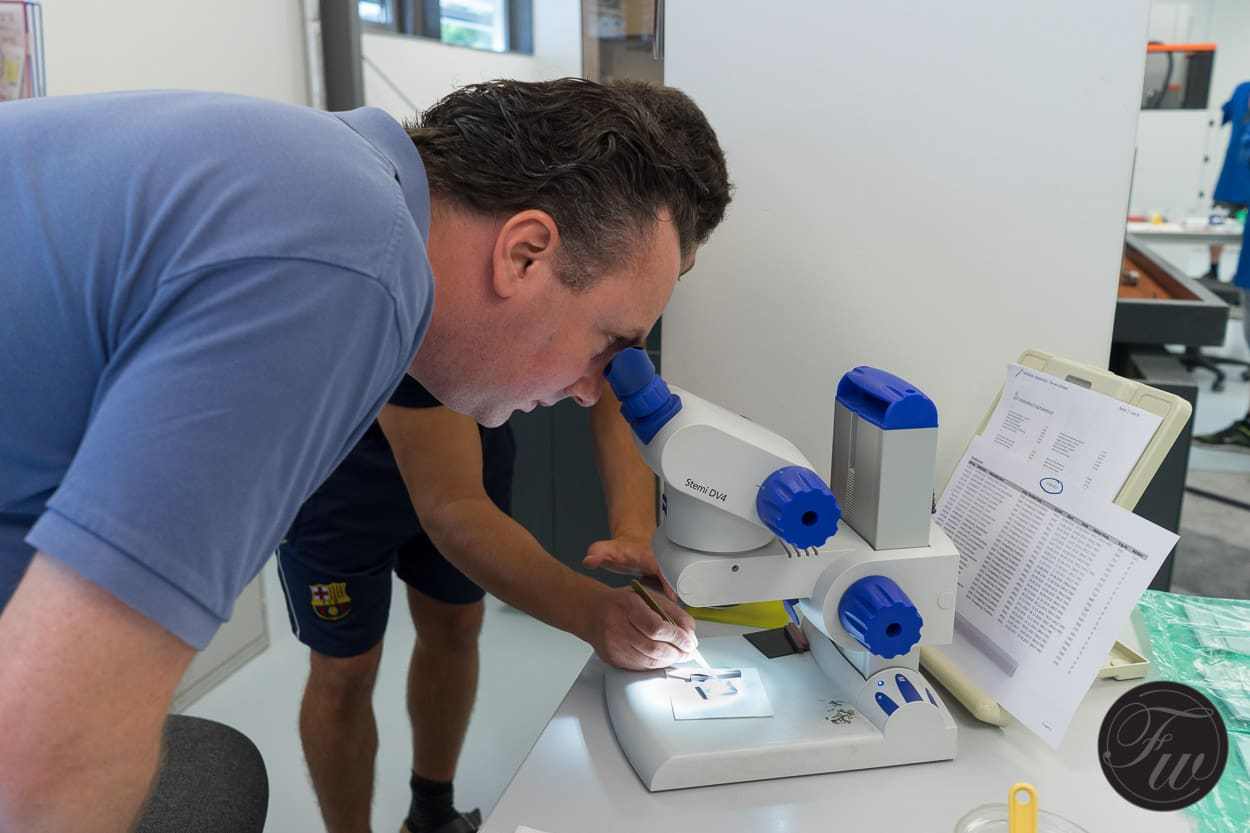
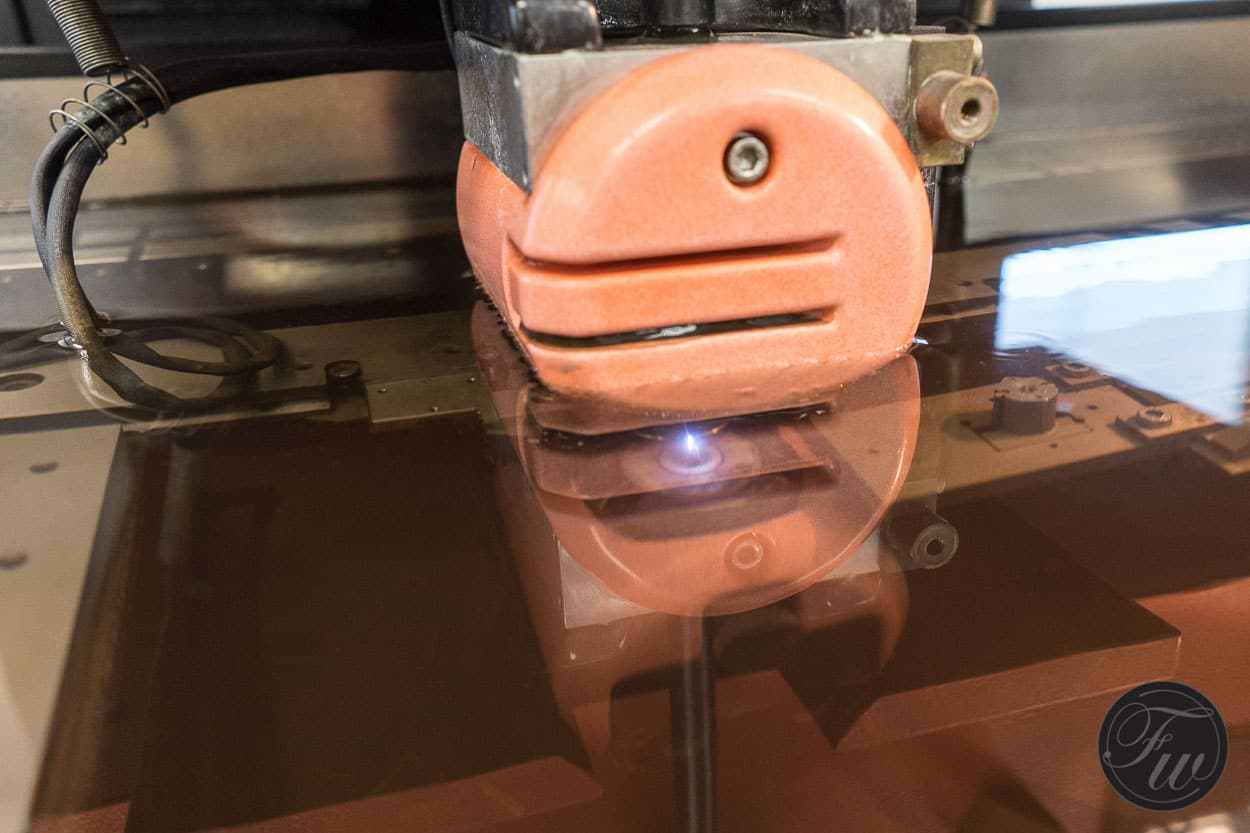

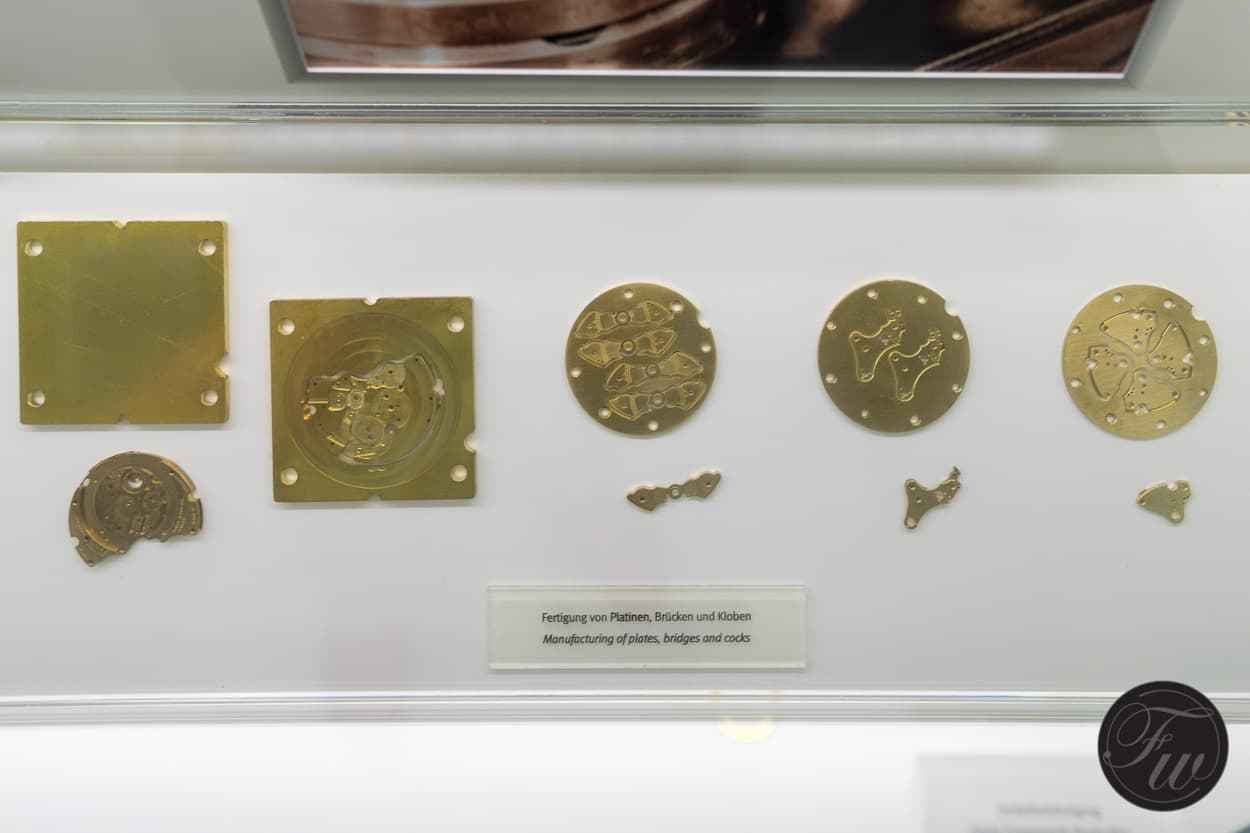
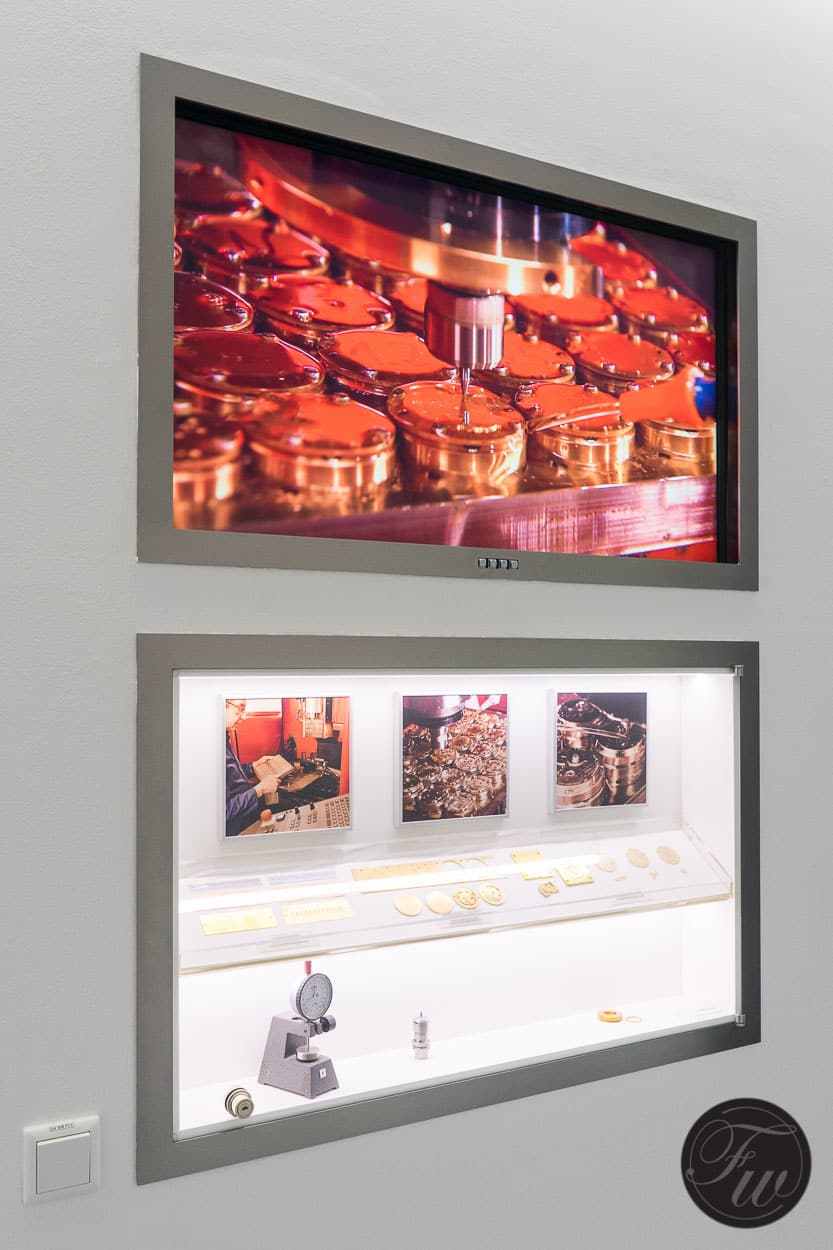
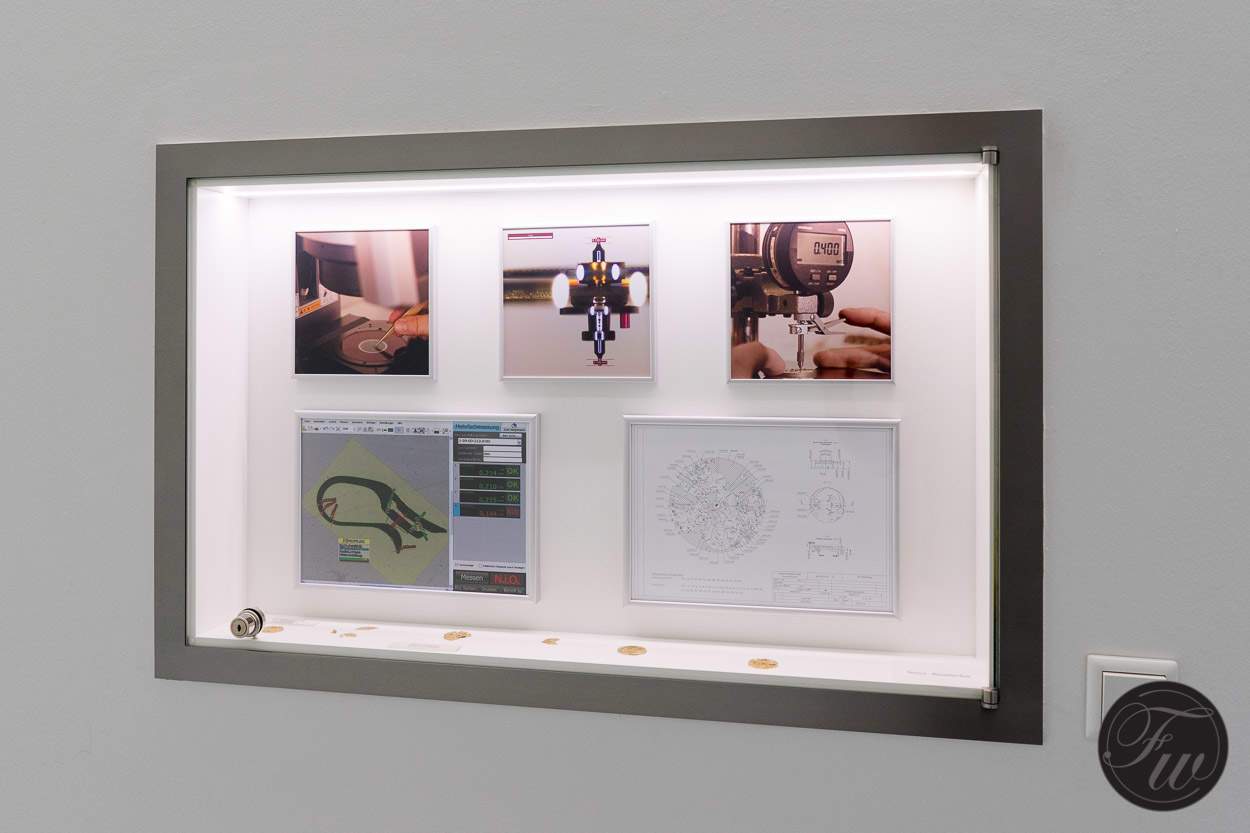




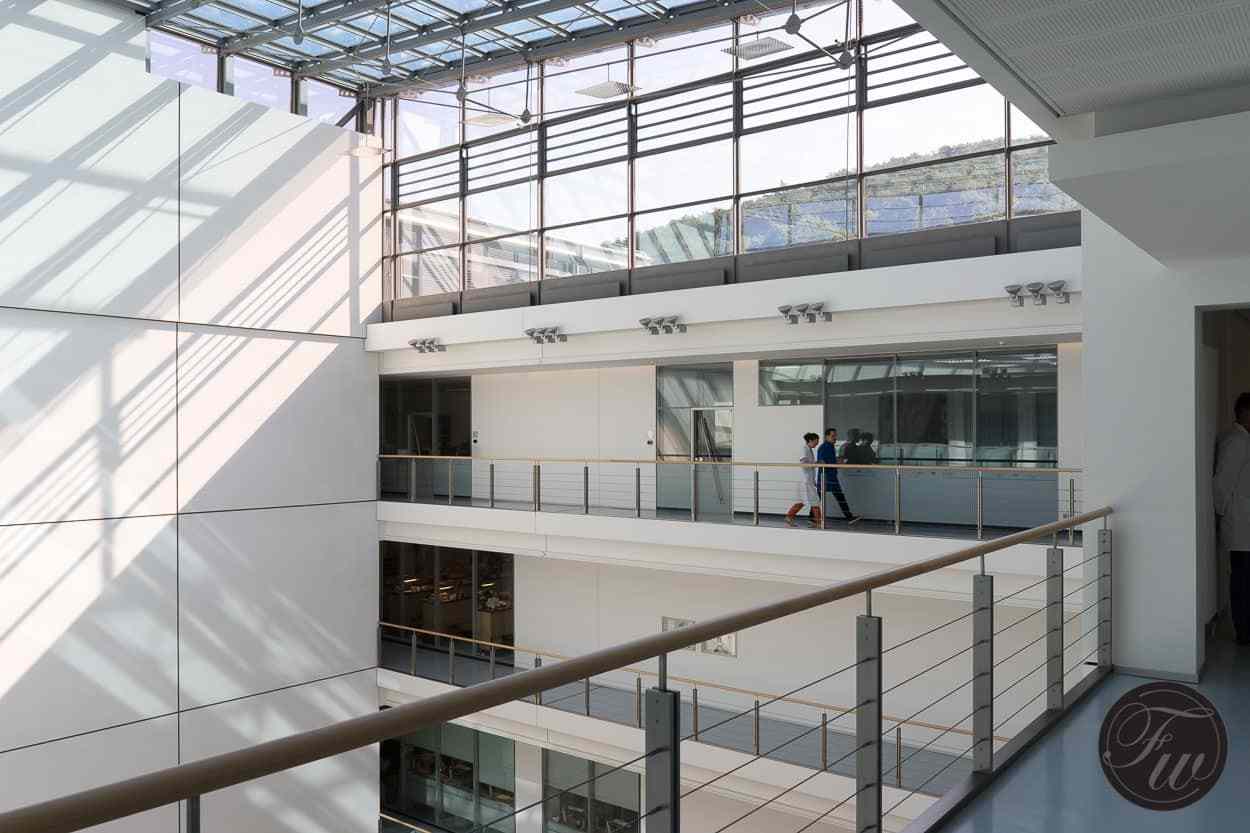
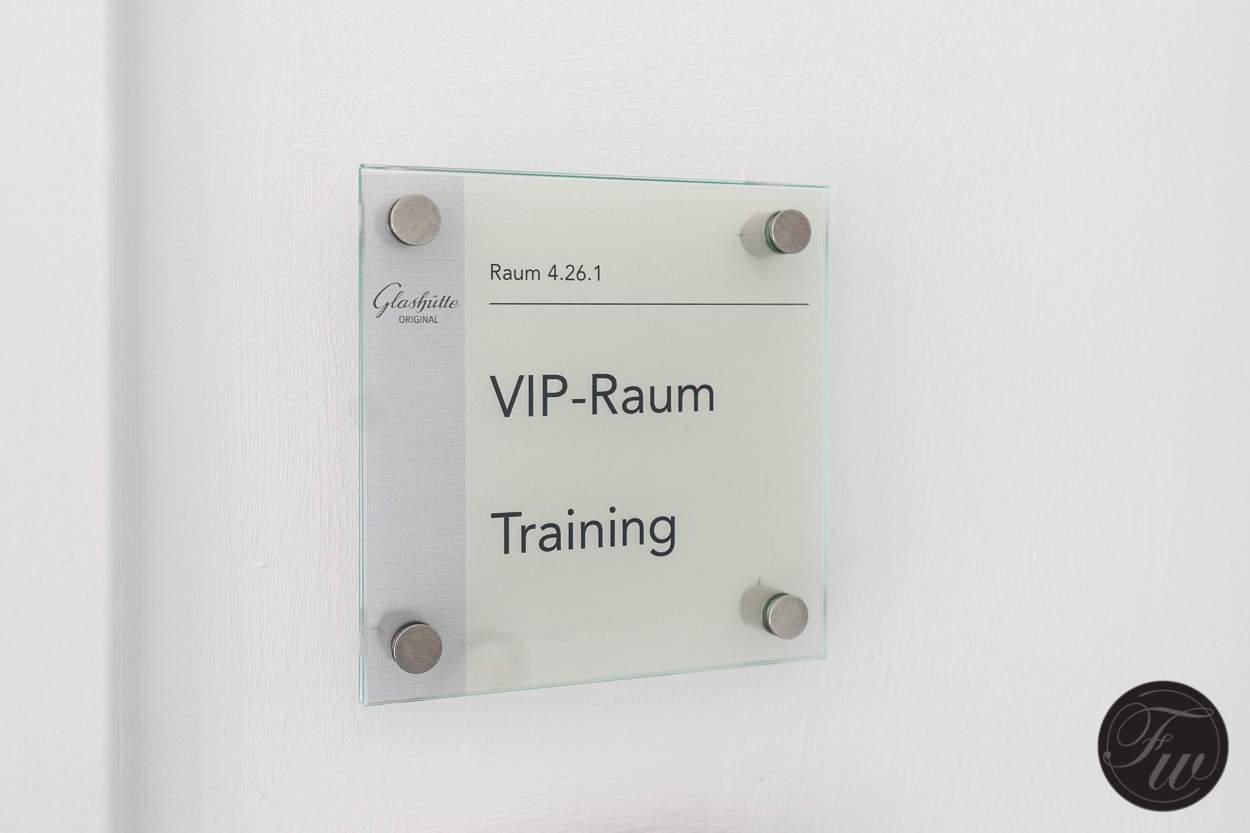

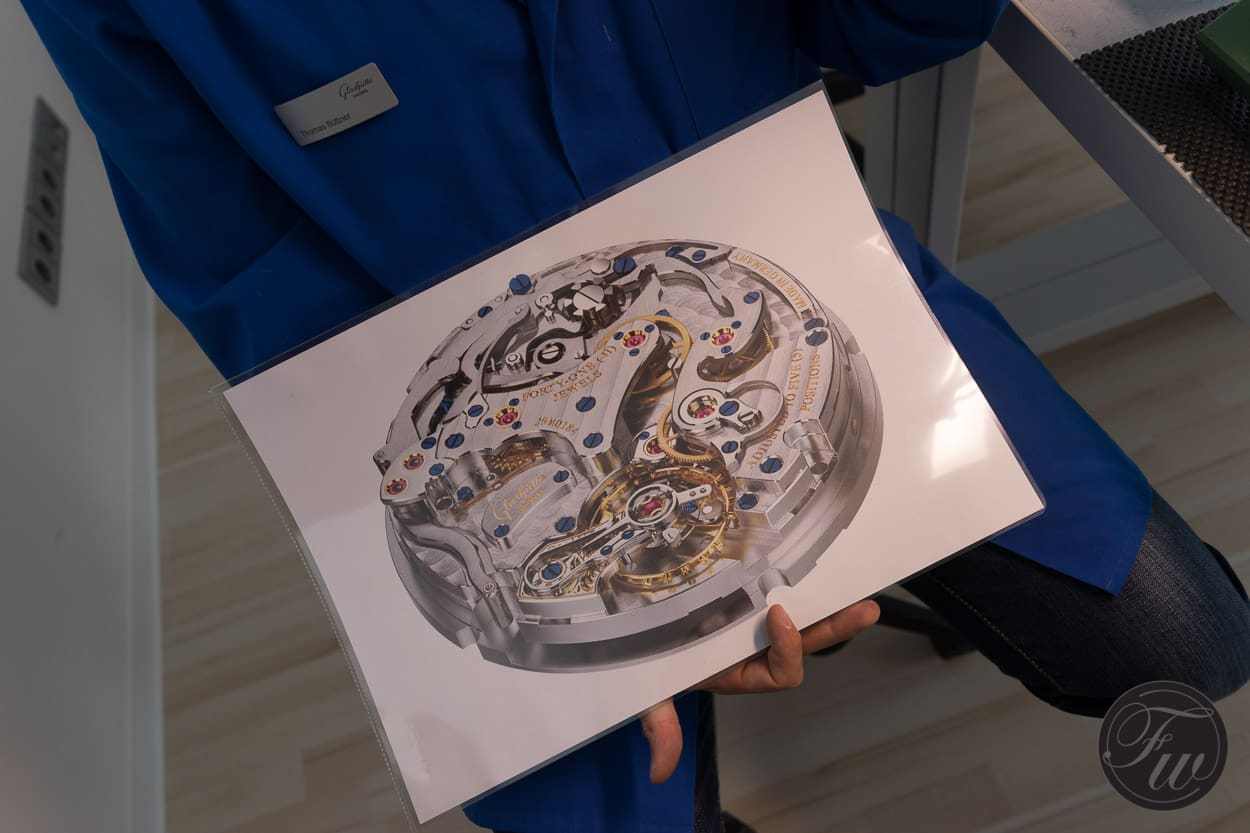






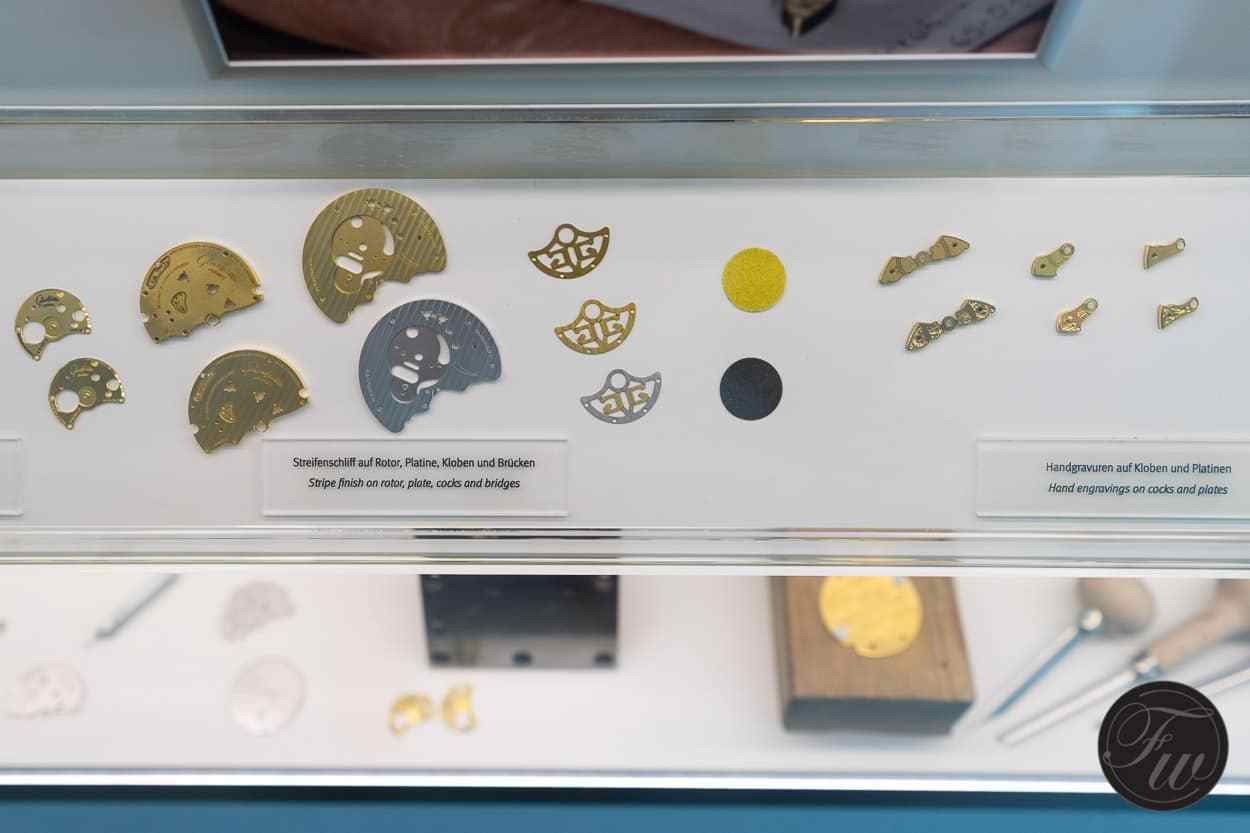










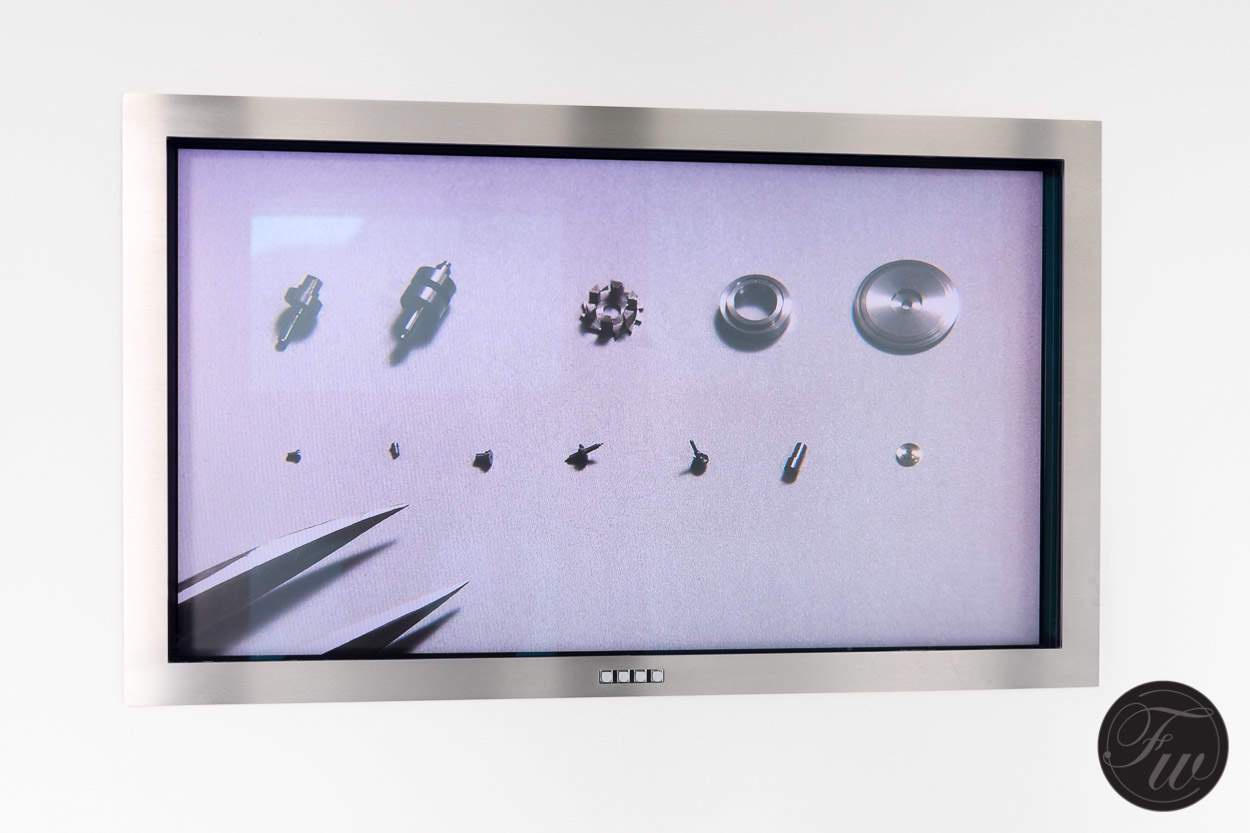
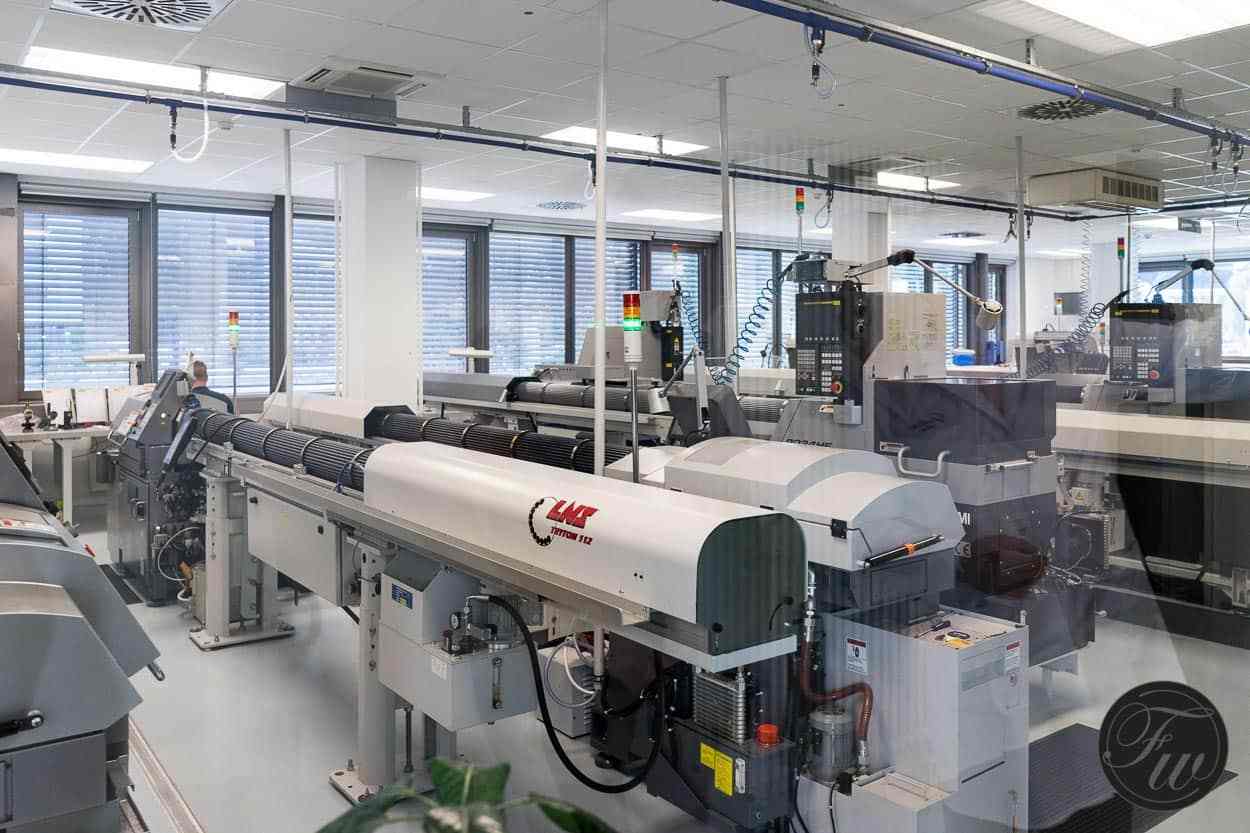

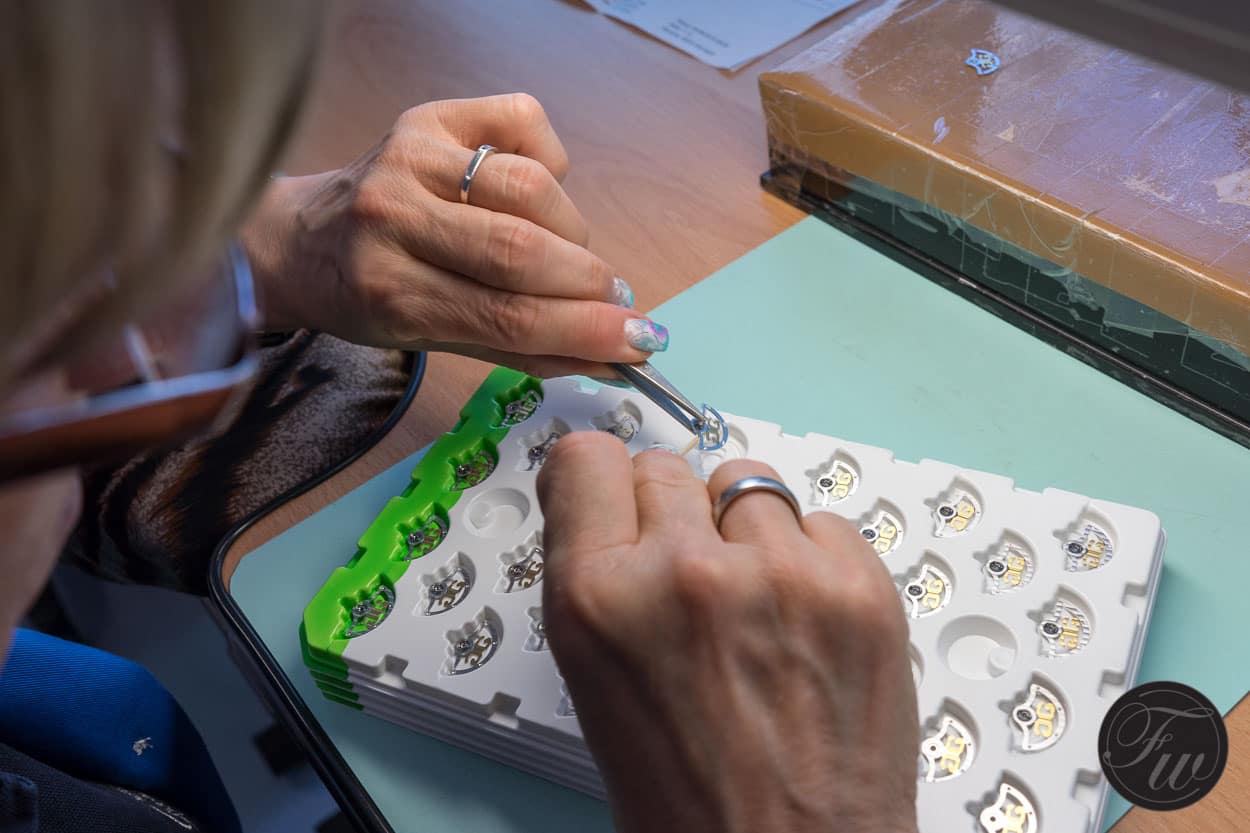
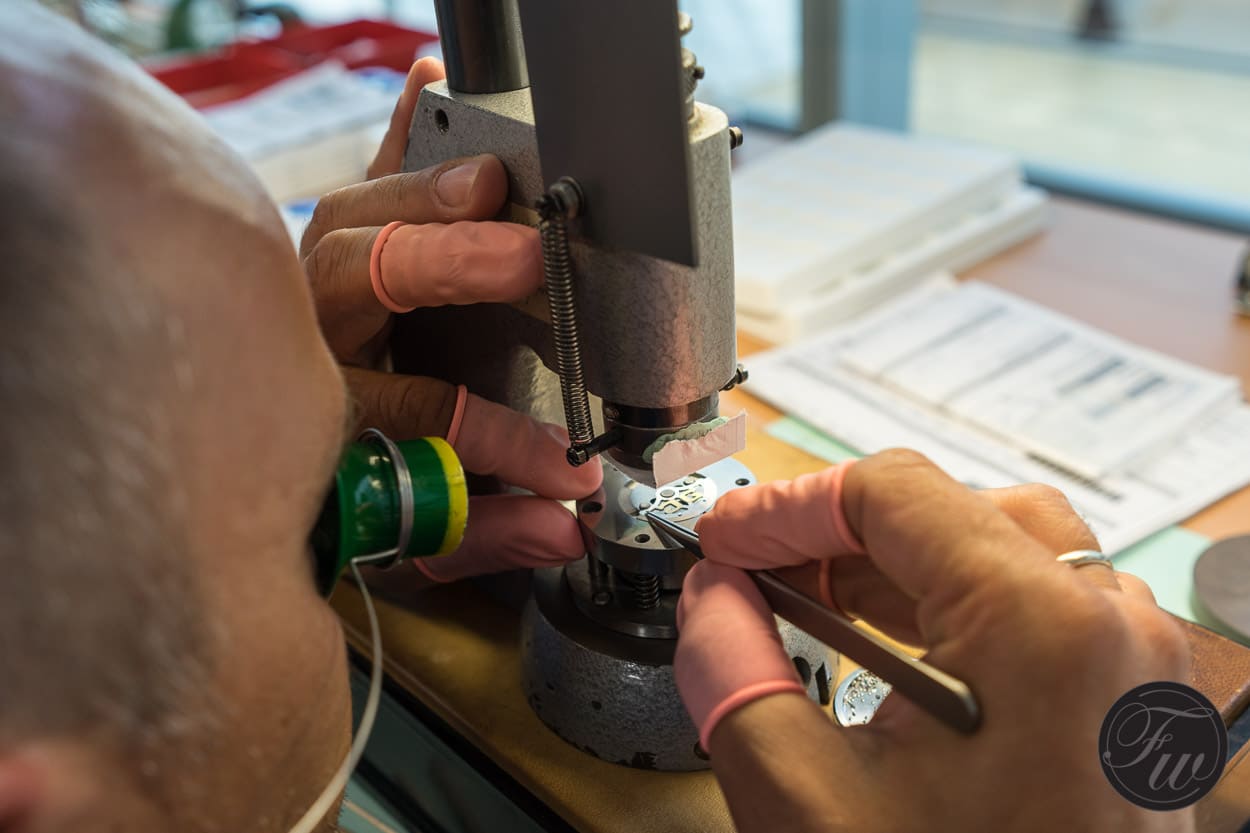

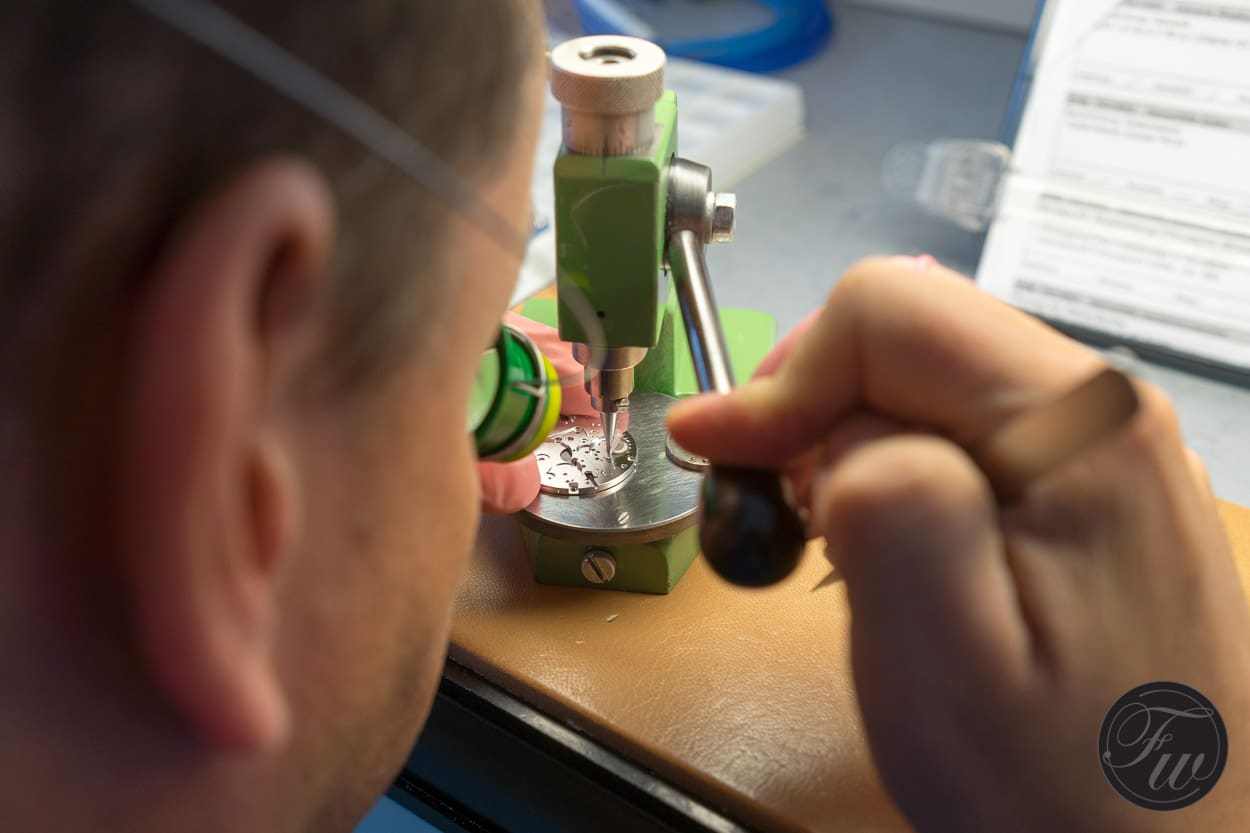
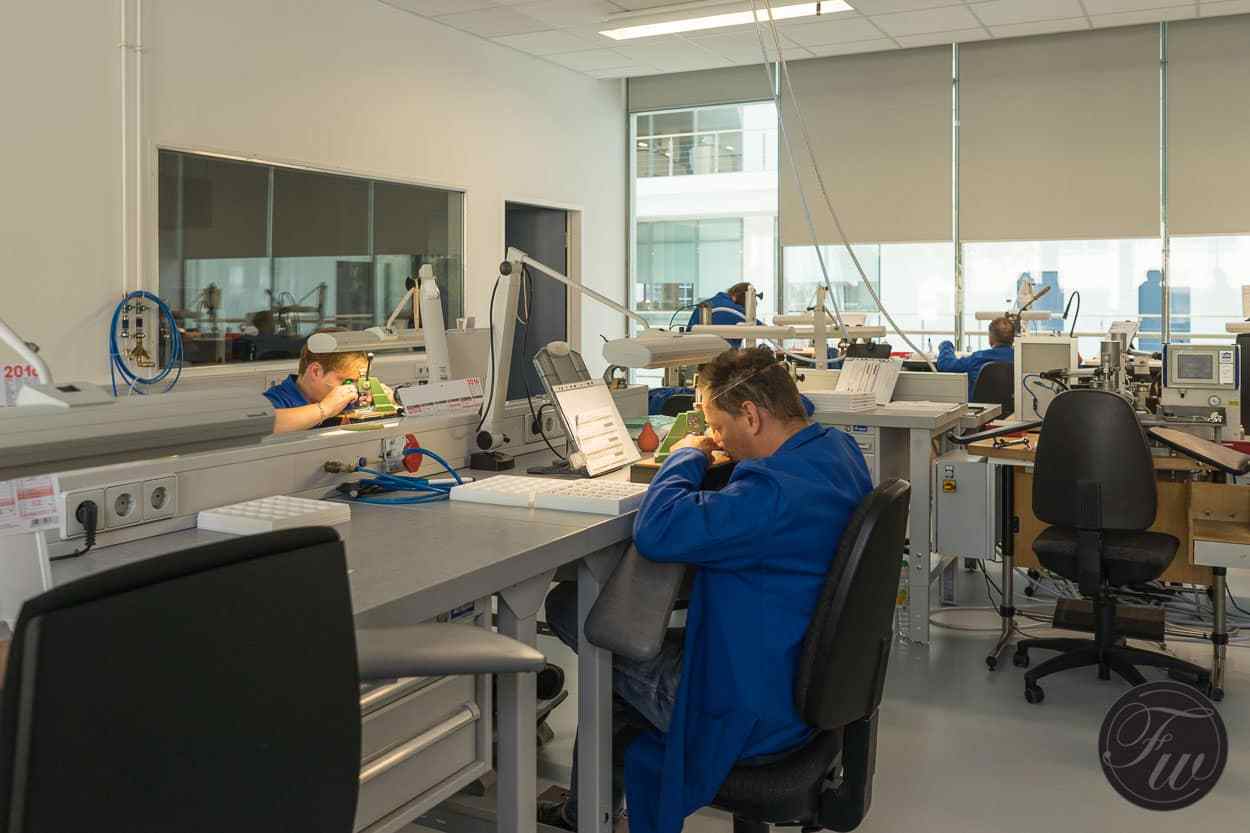

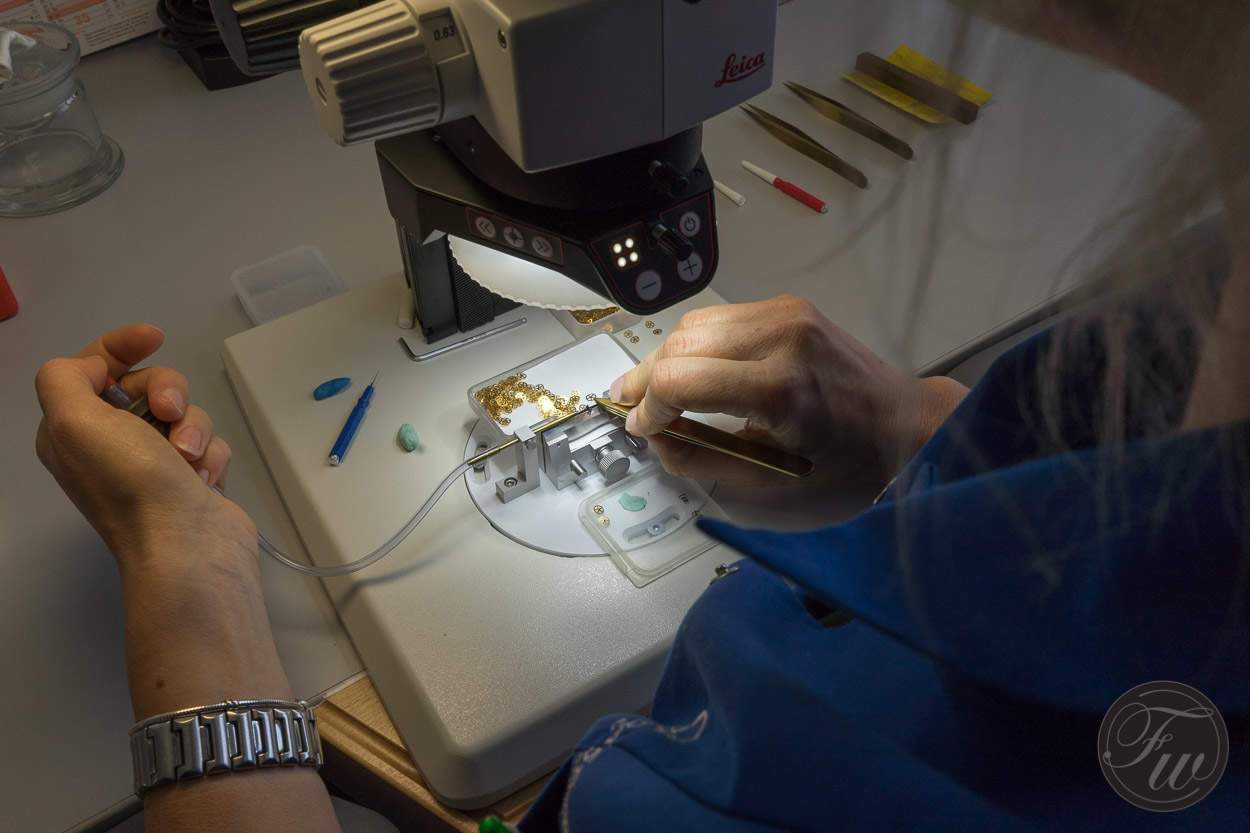

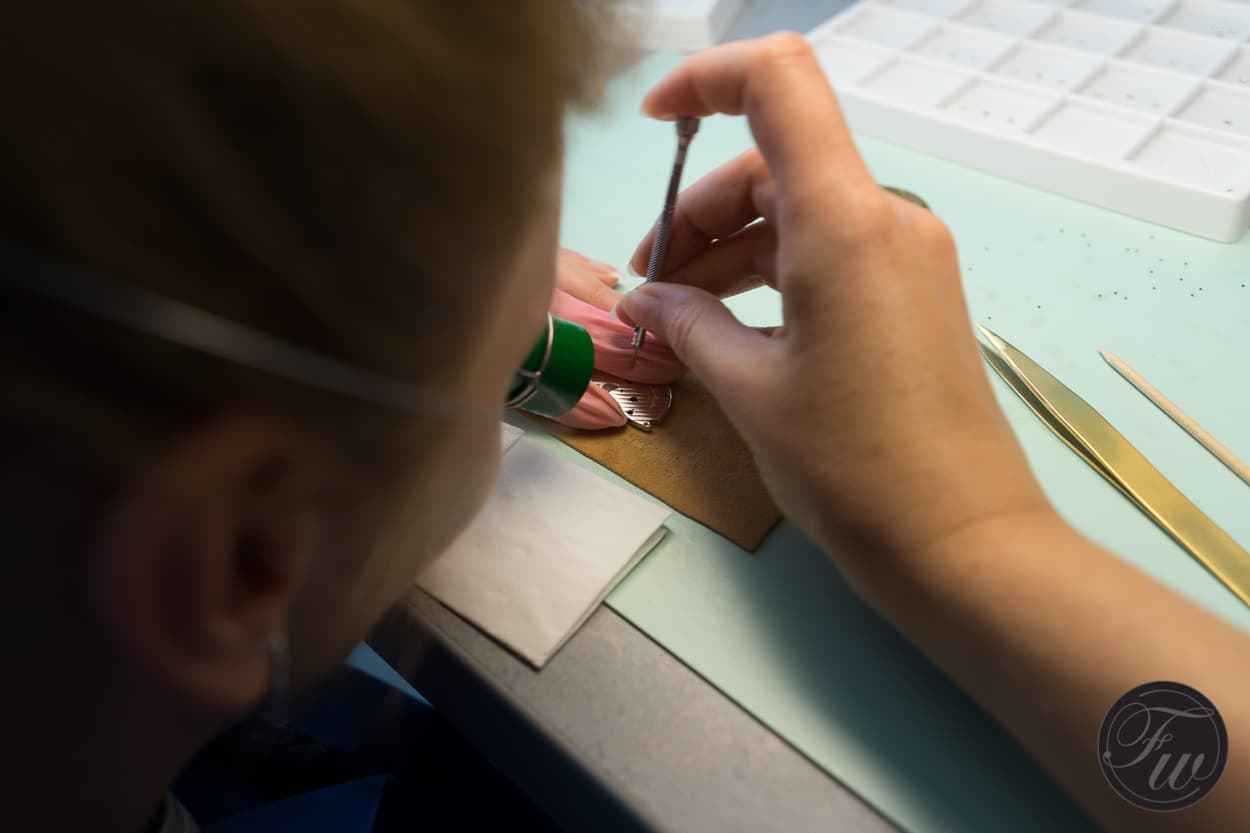
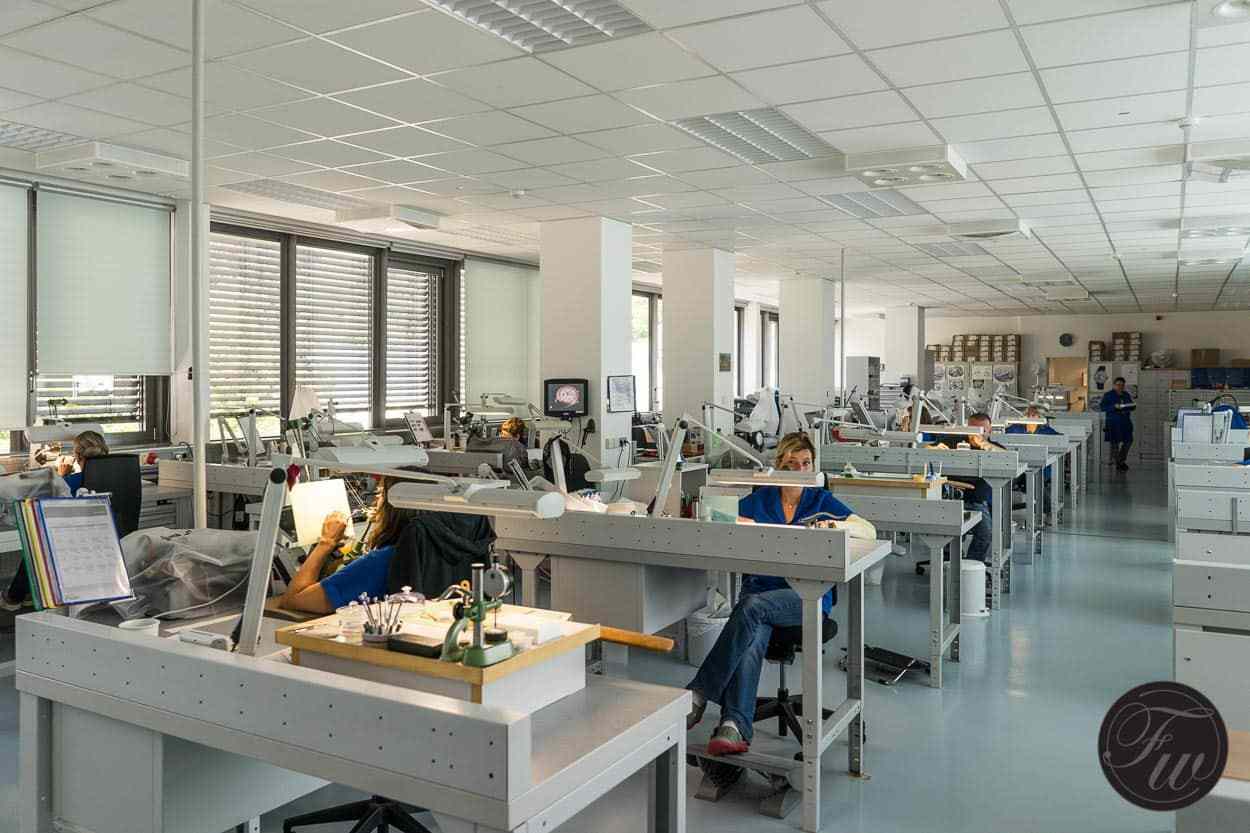
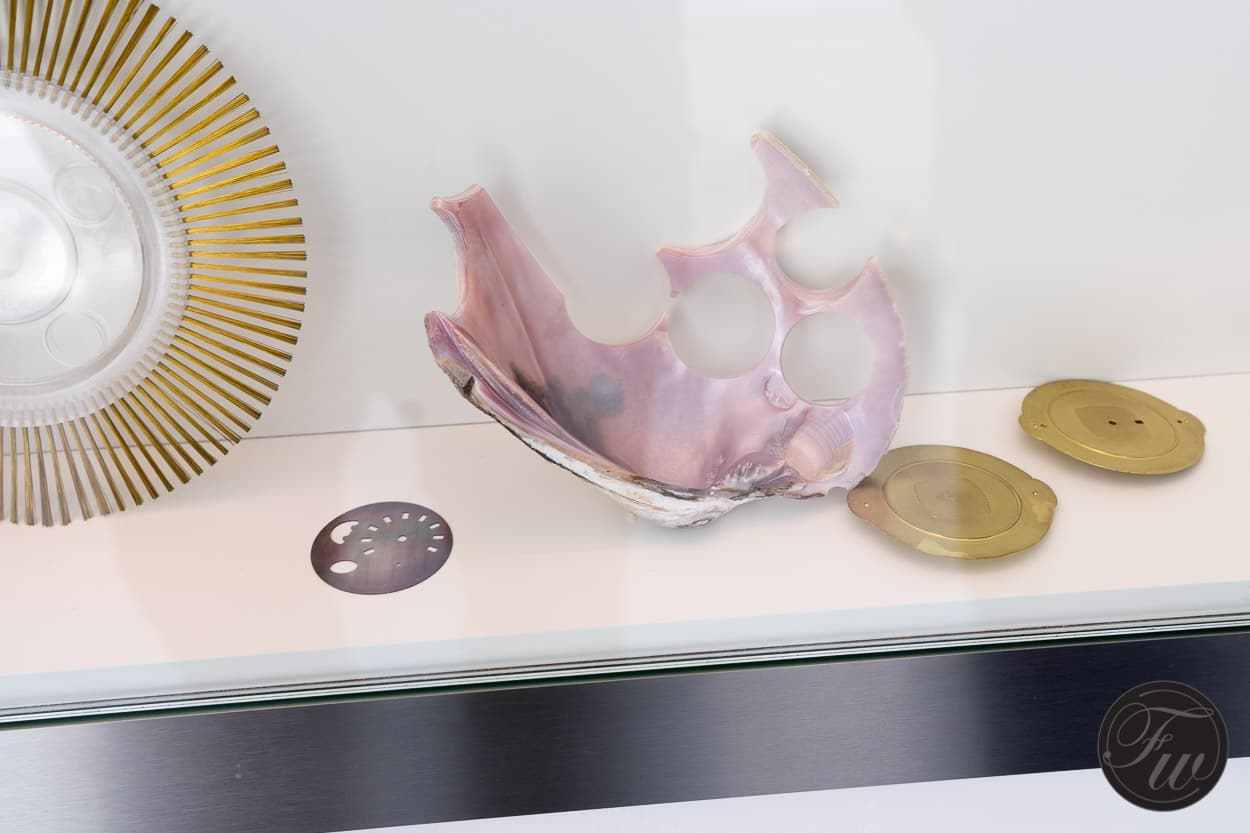

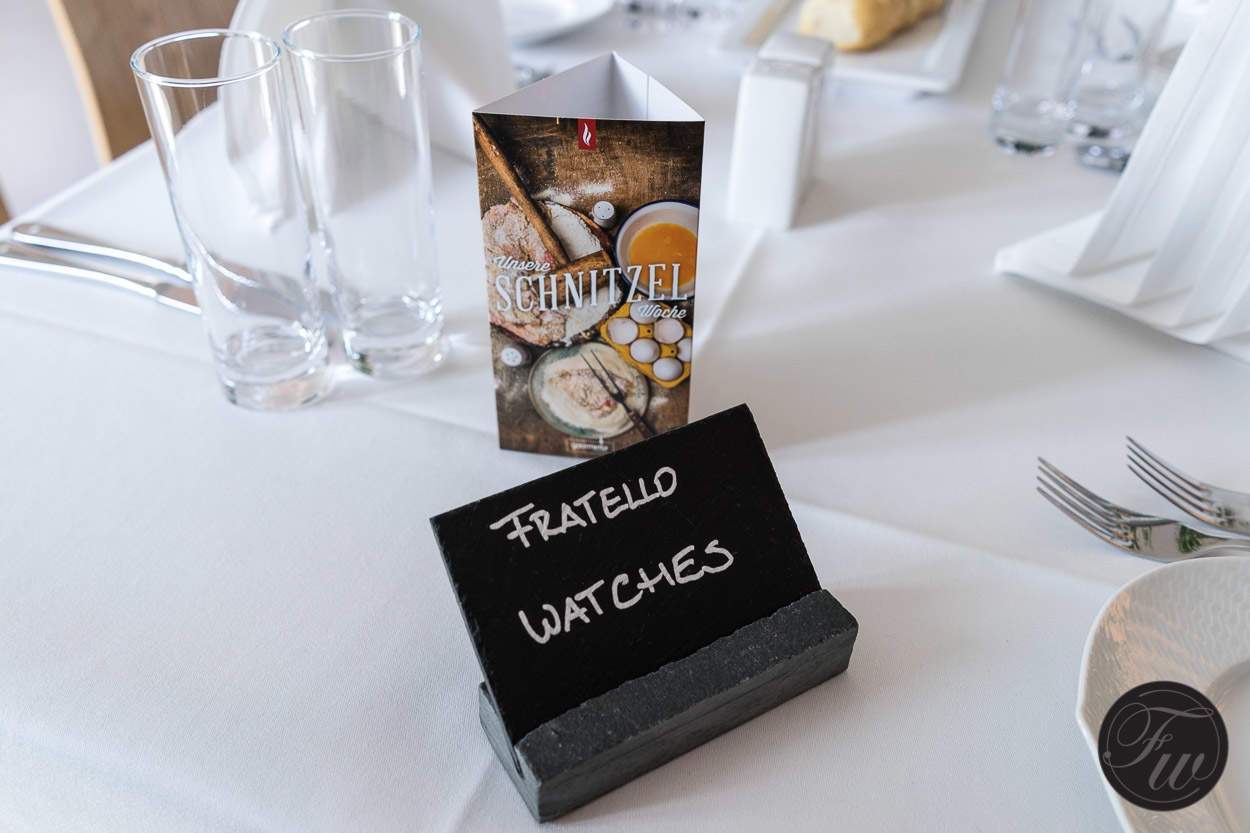
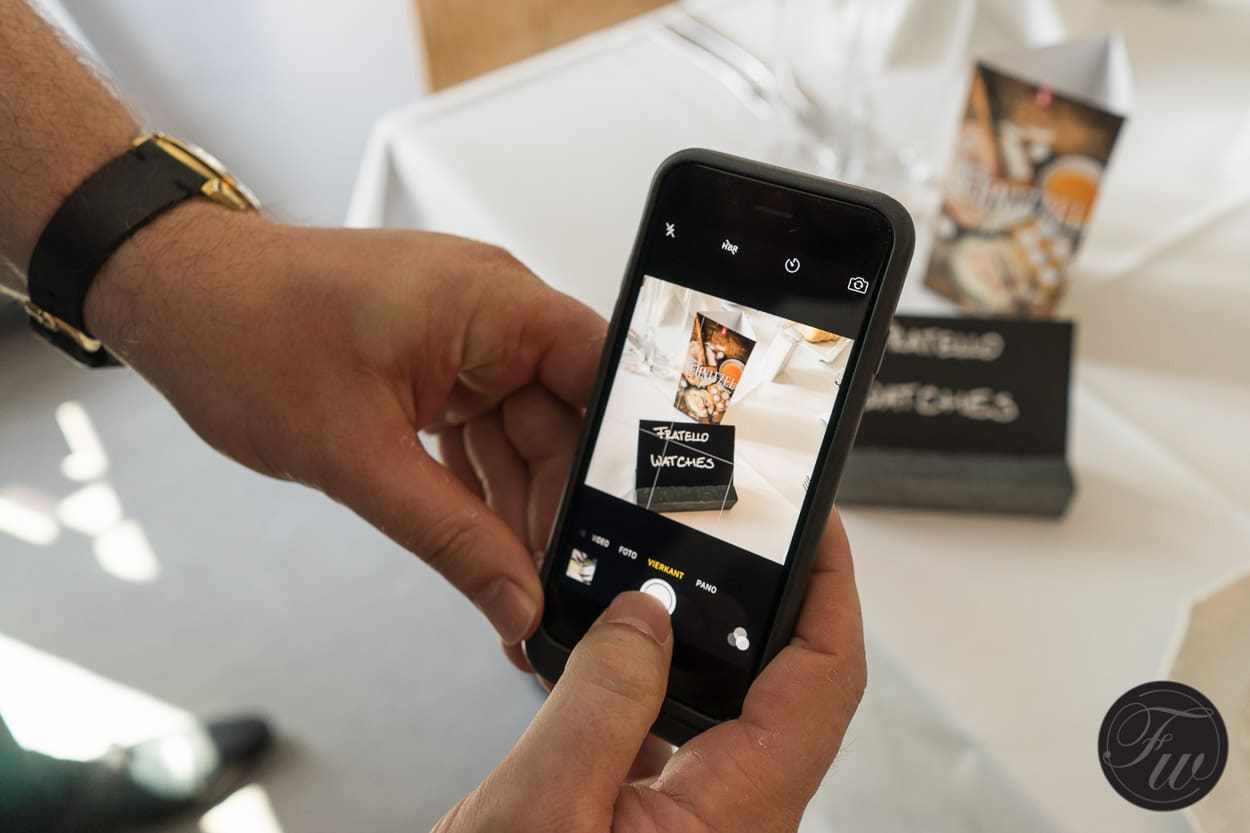


Warning: Trying to access array offset on value of type null in /www/wwwroot/cheapbellross.com/wp-content/themes/hotmagazine/single.php on line 170
Warning: Trying to access array offset on value of type null in /www/wwwroot/cheapbellross.com/wp-content/themes/hotmagazine/single.php on line 257
